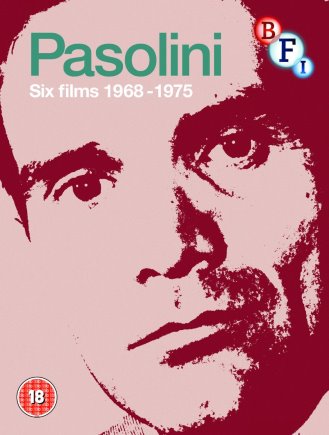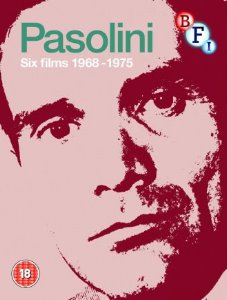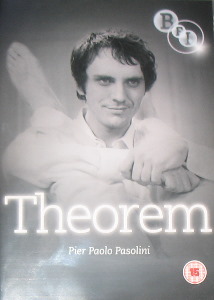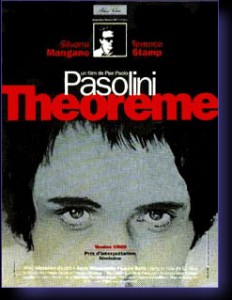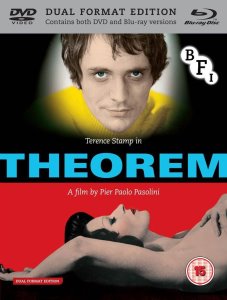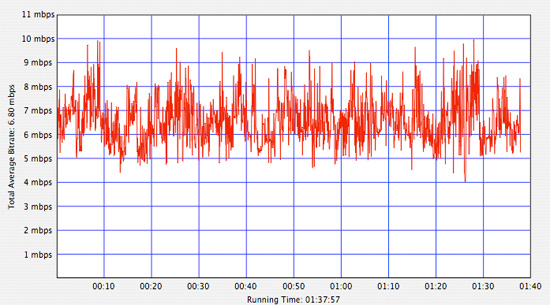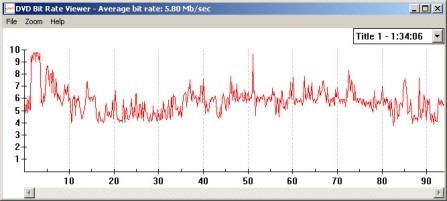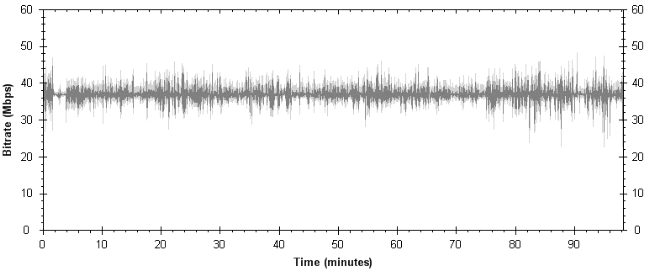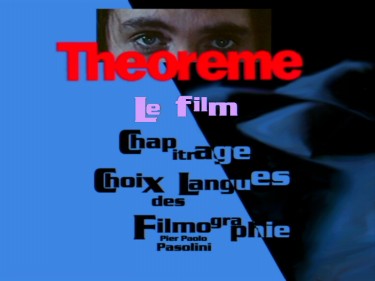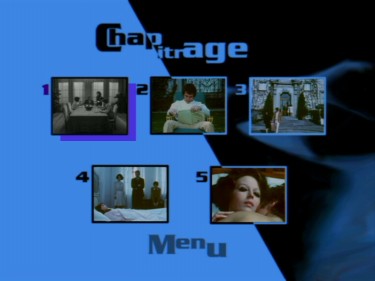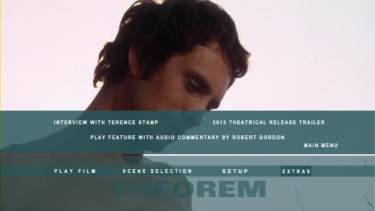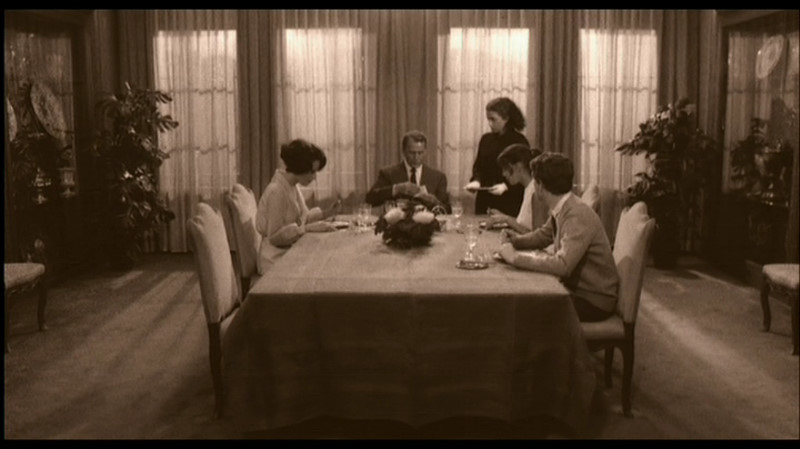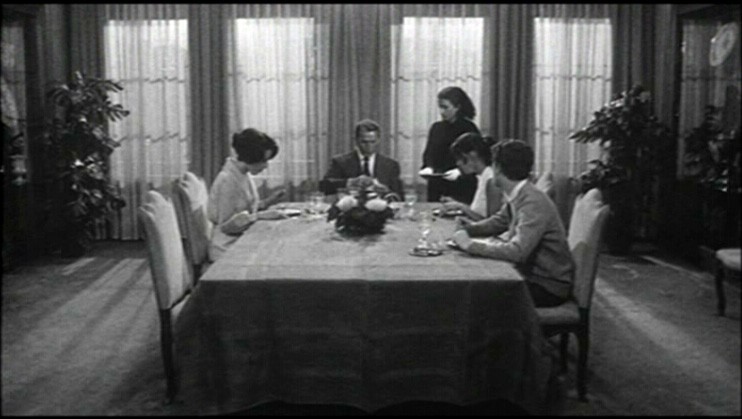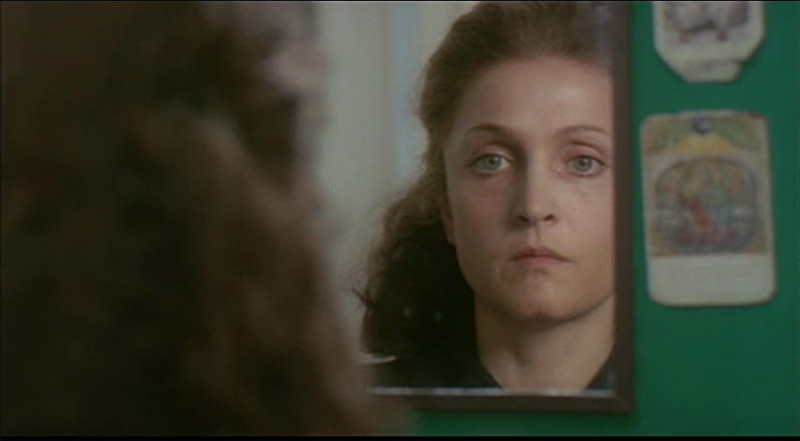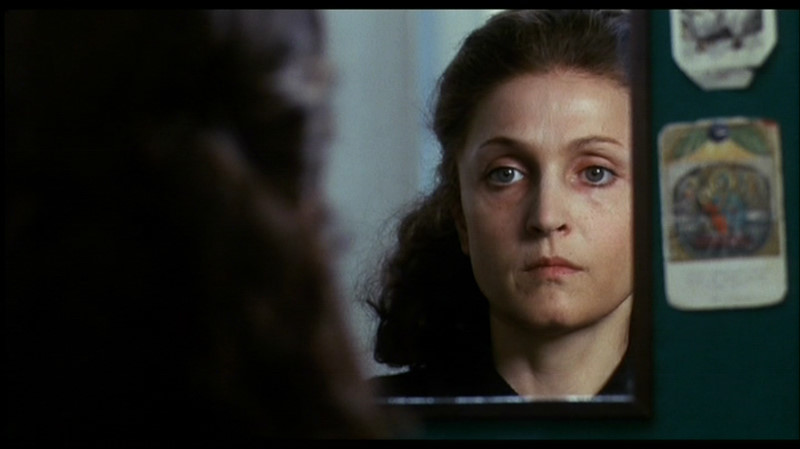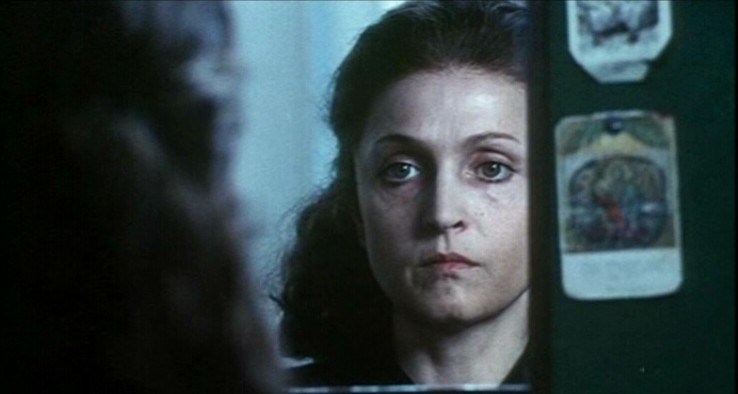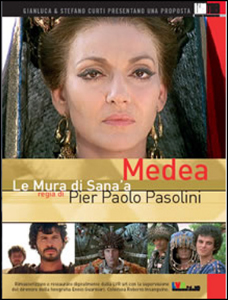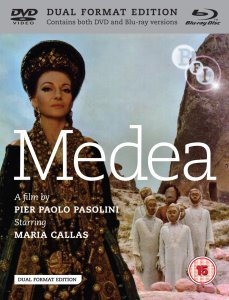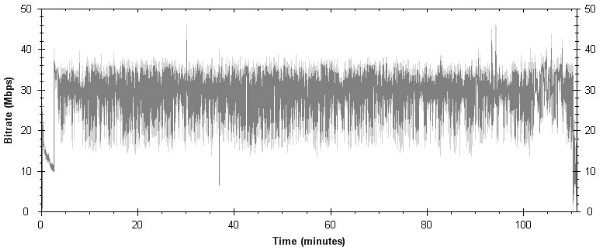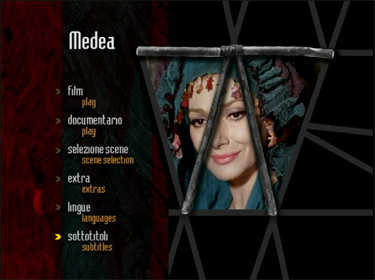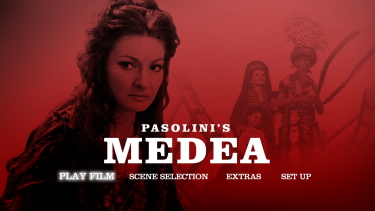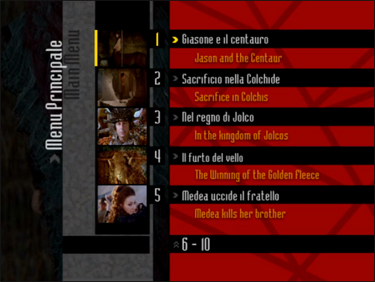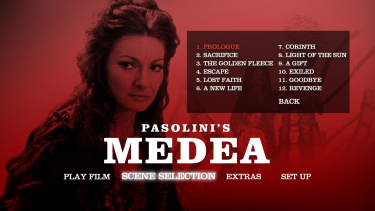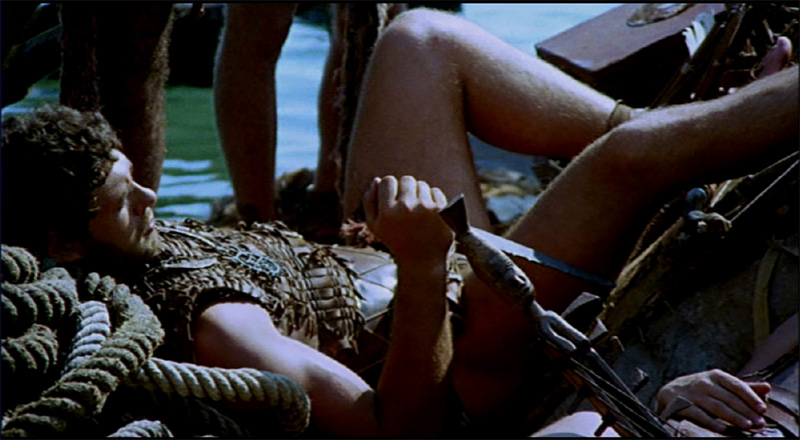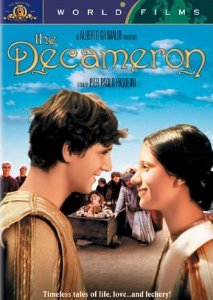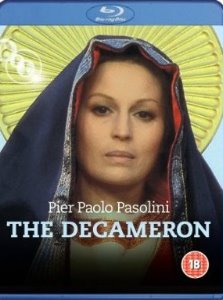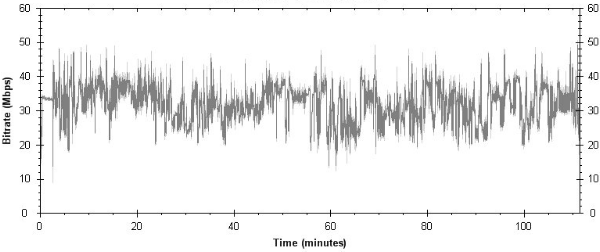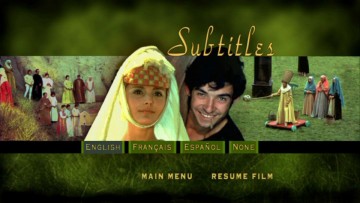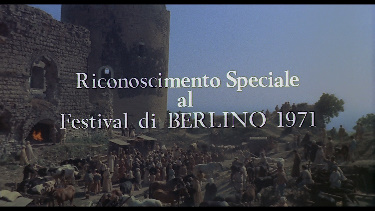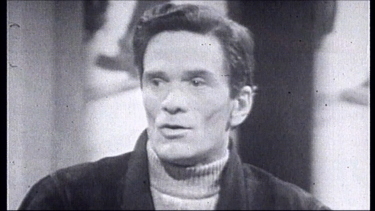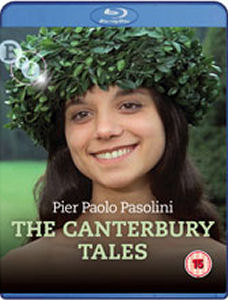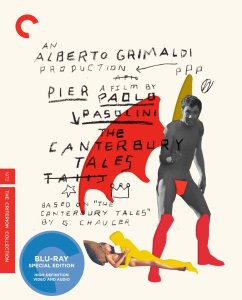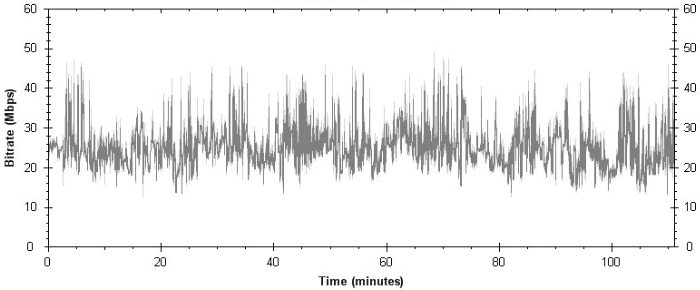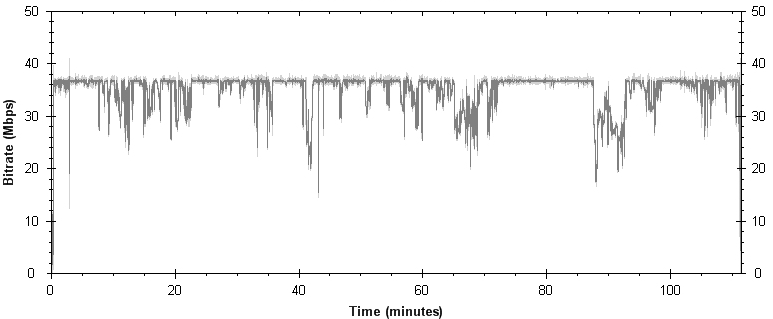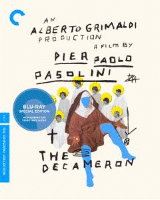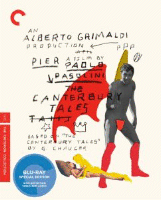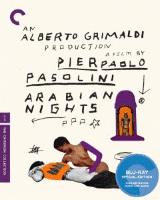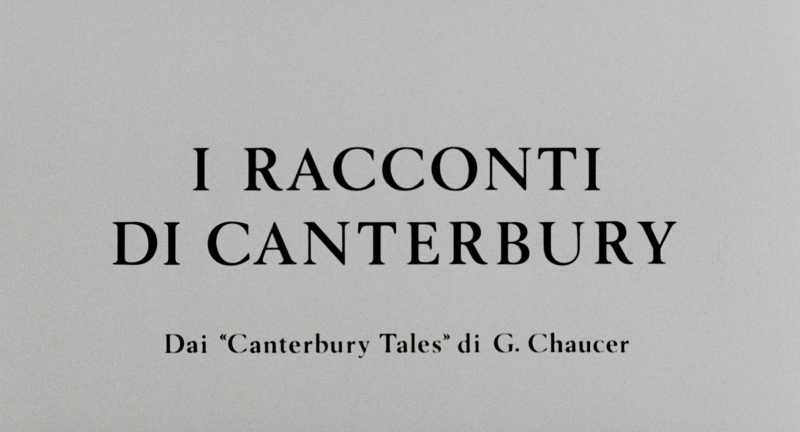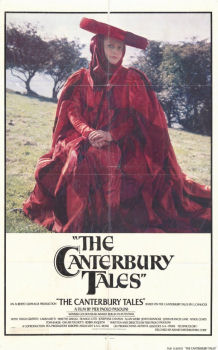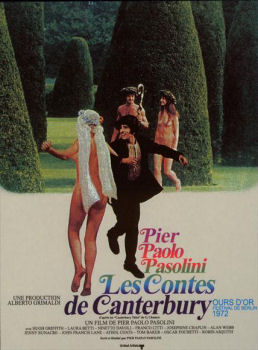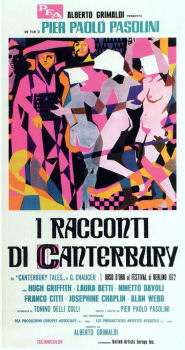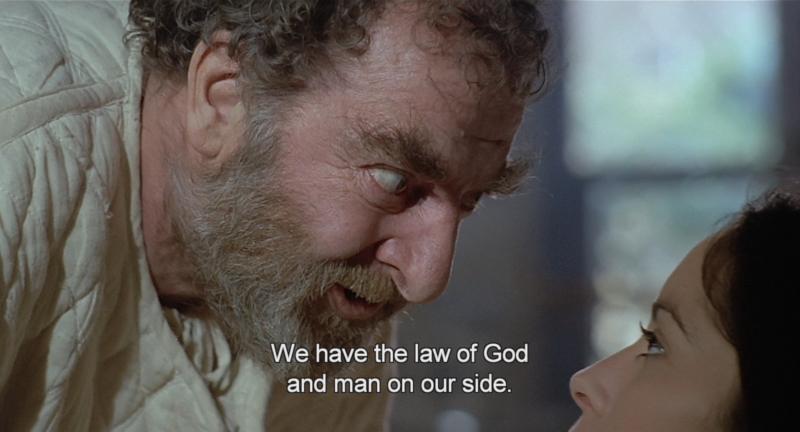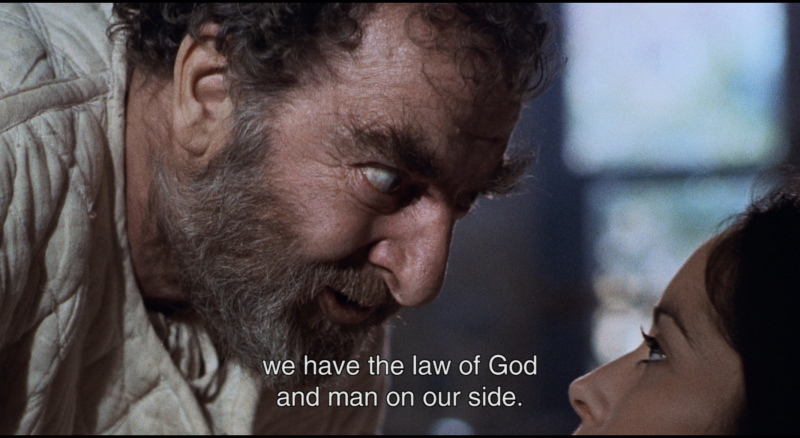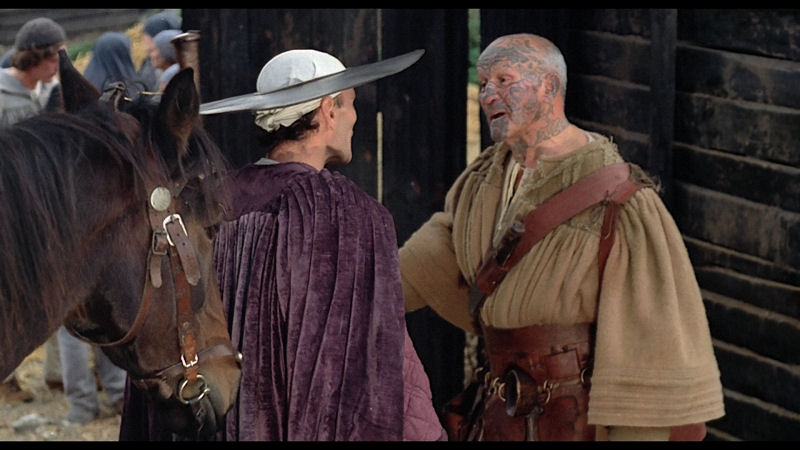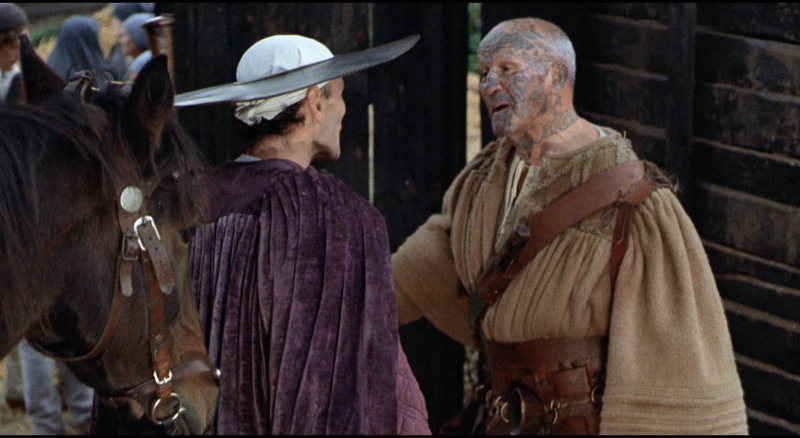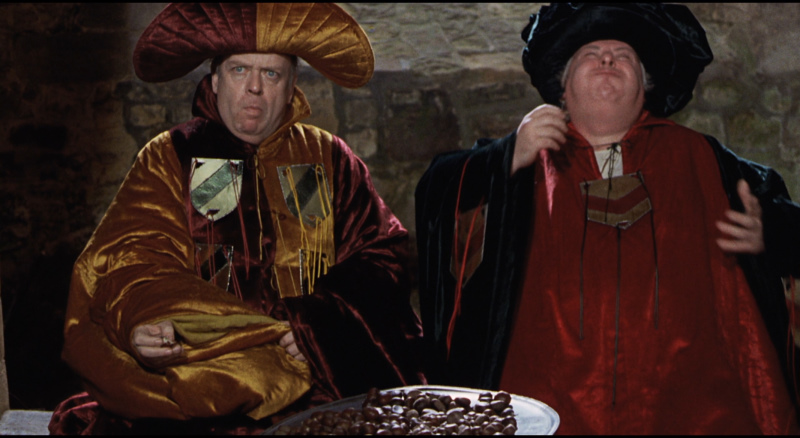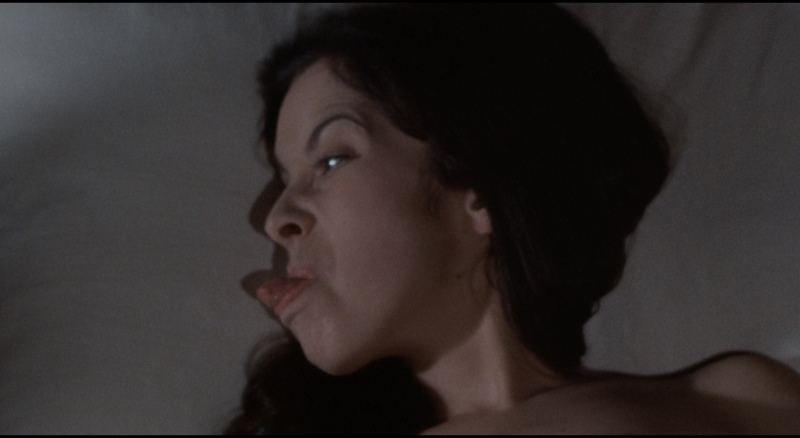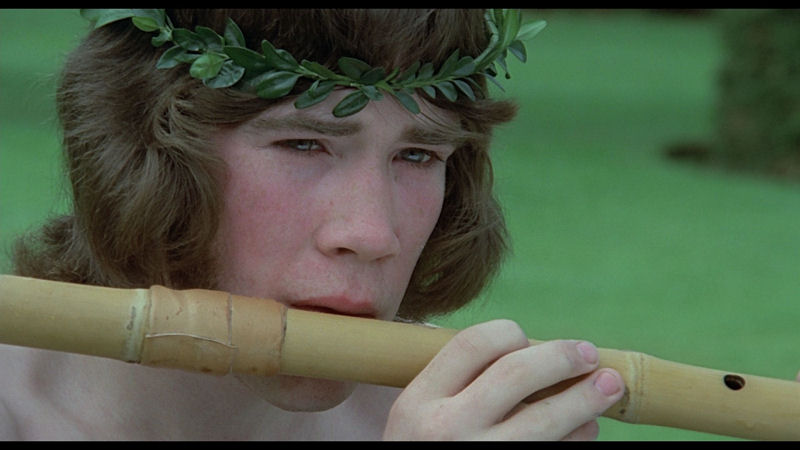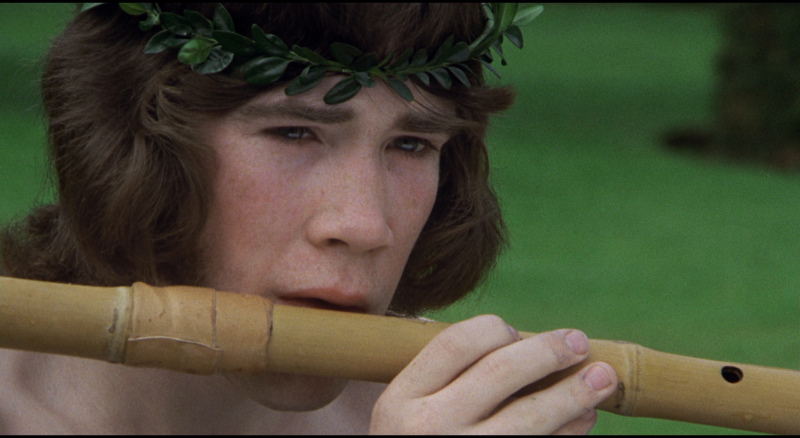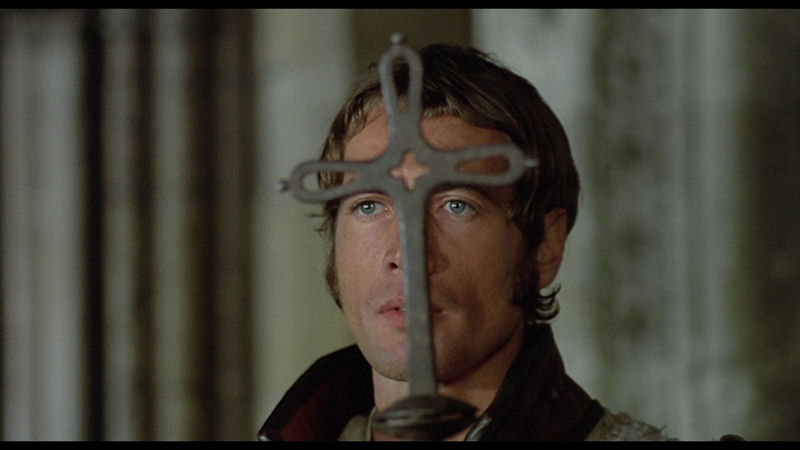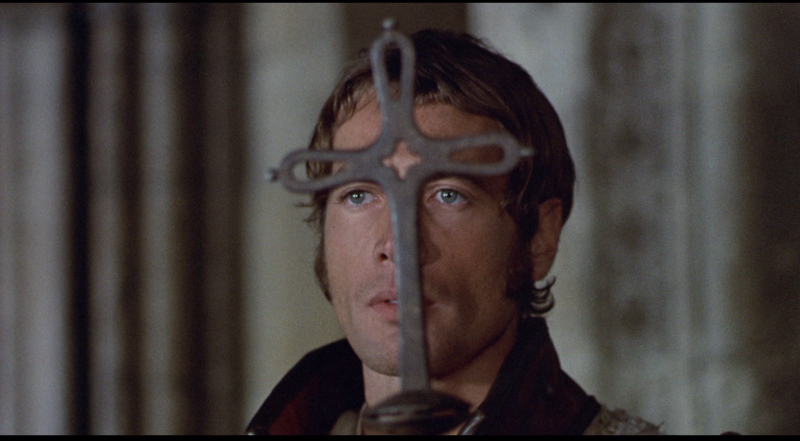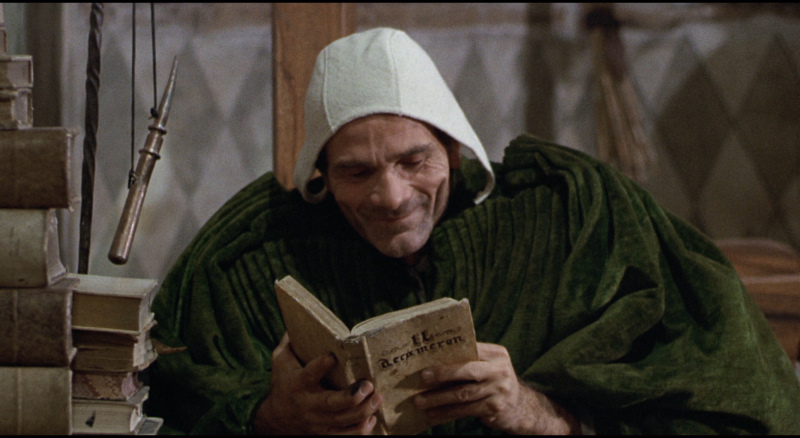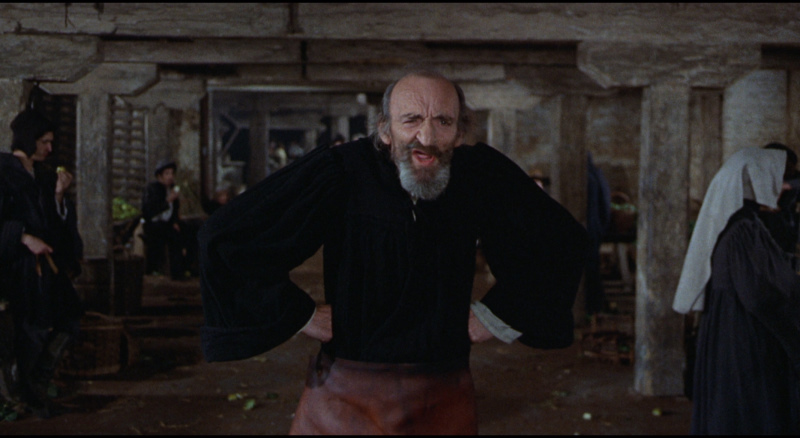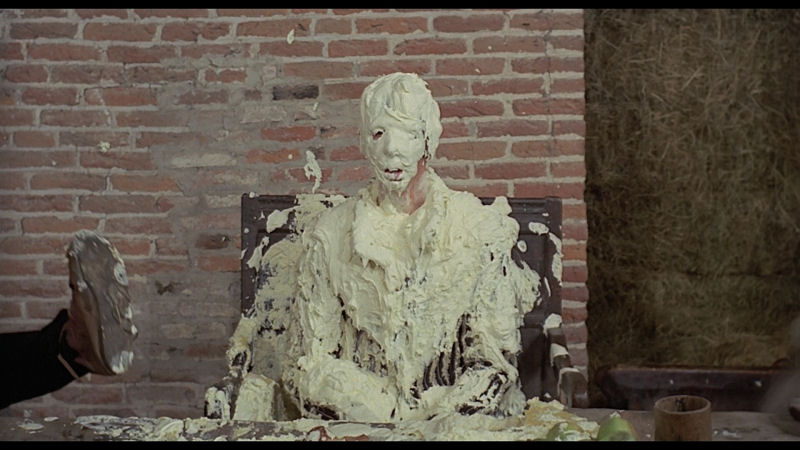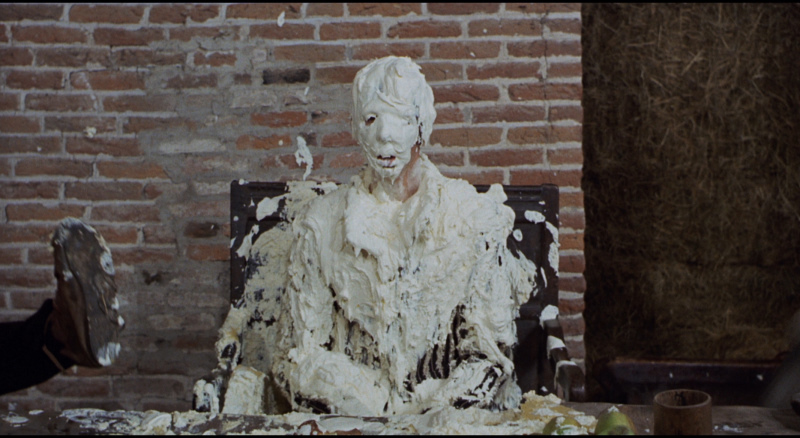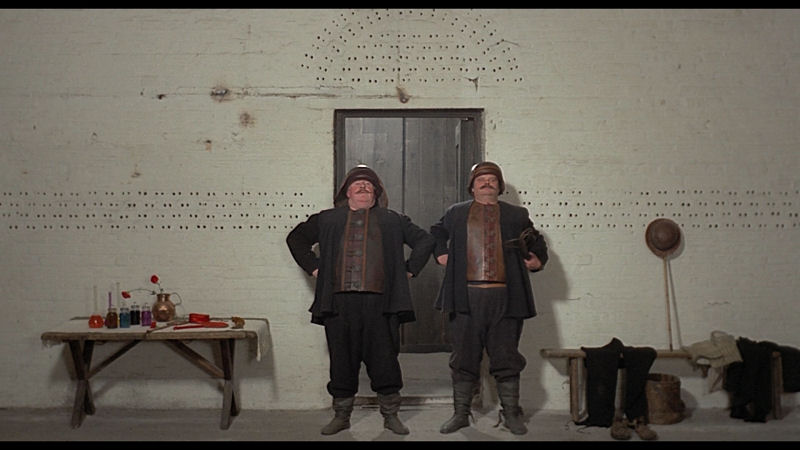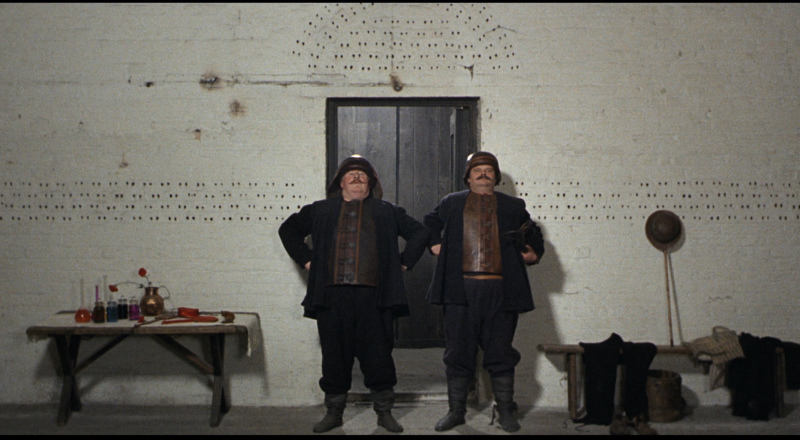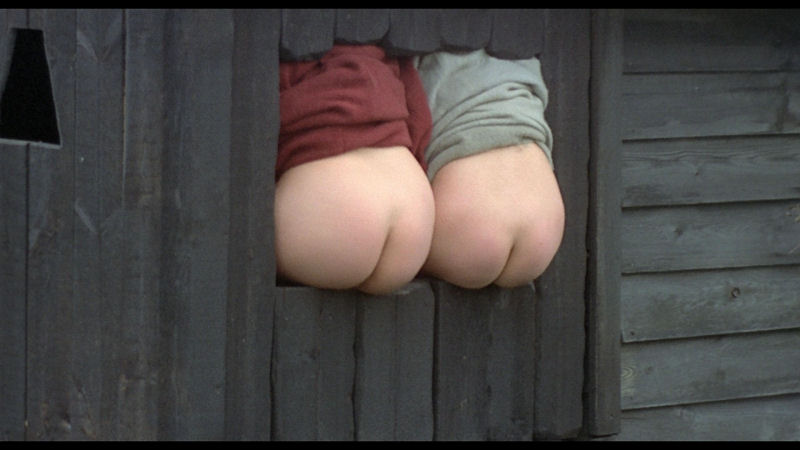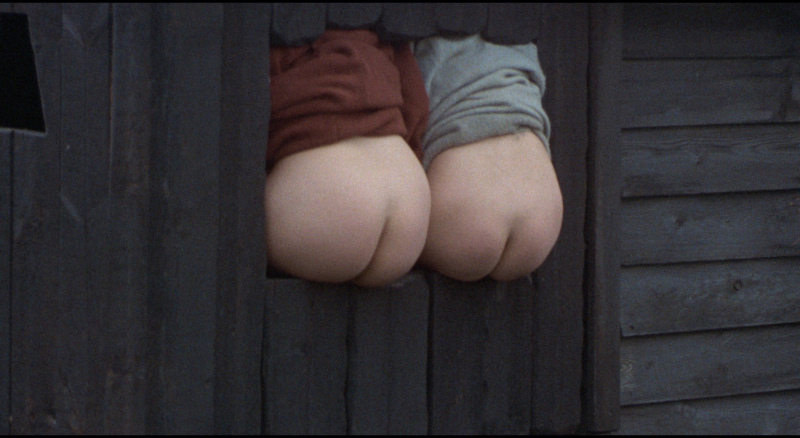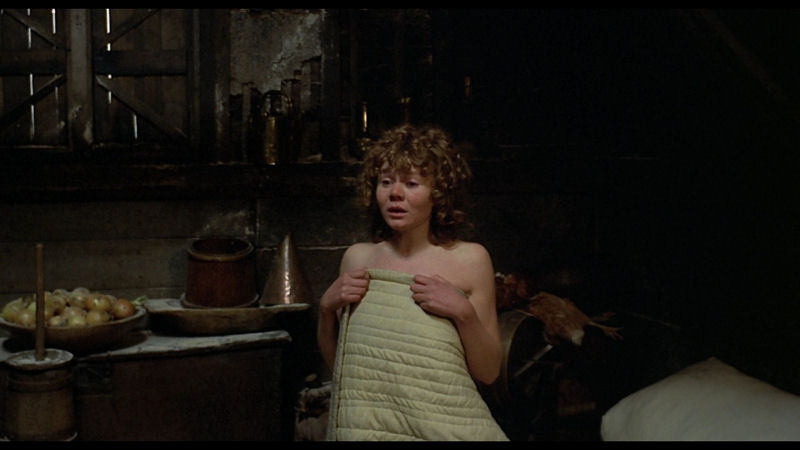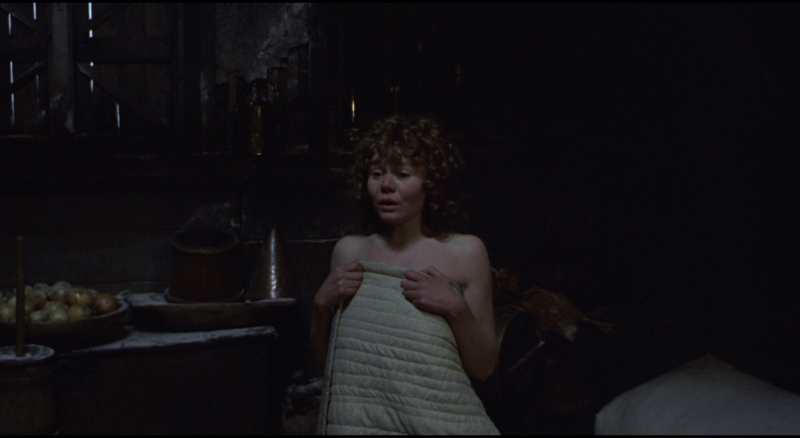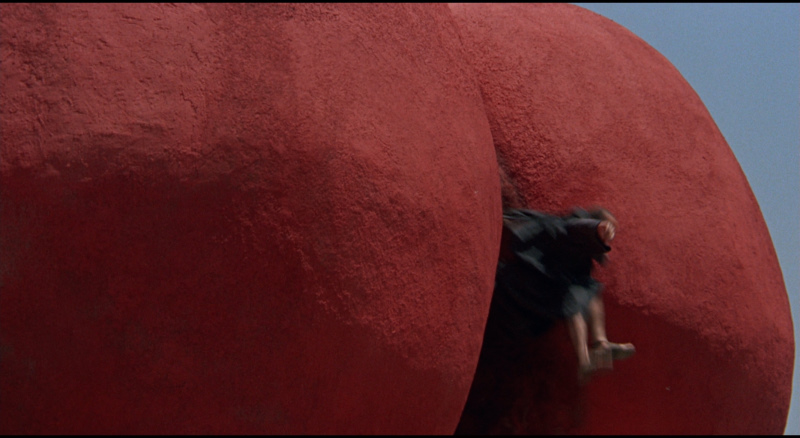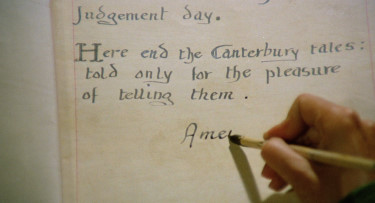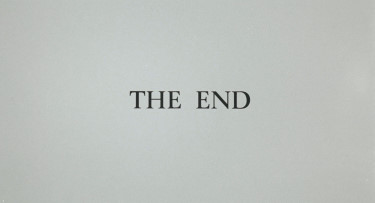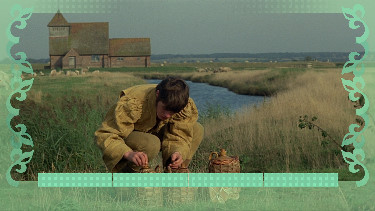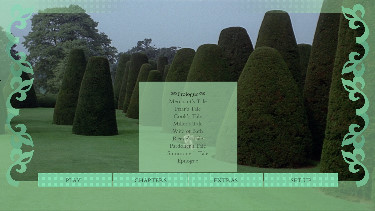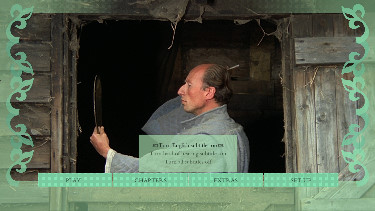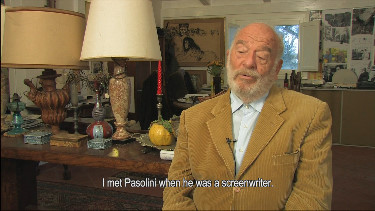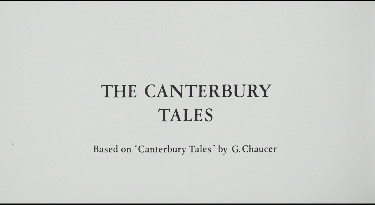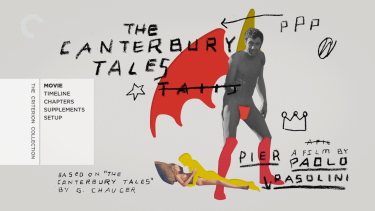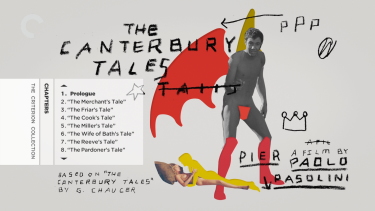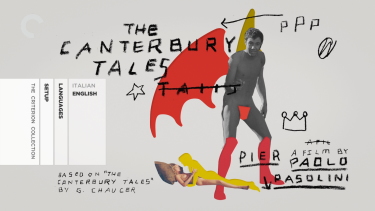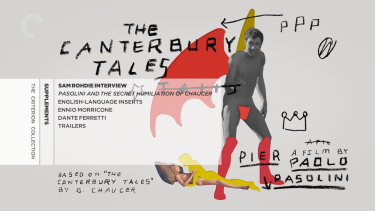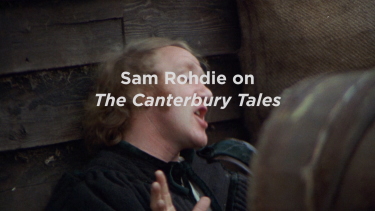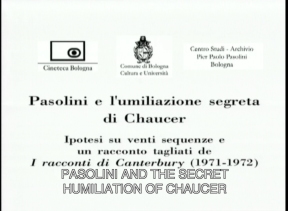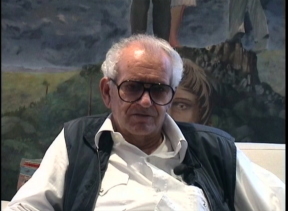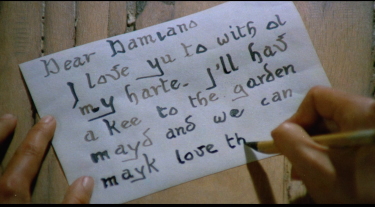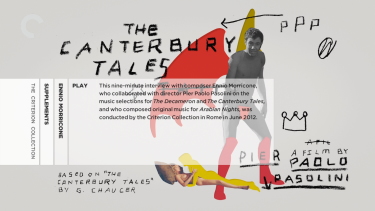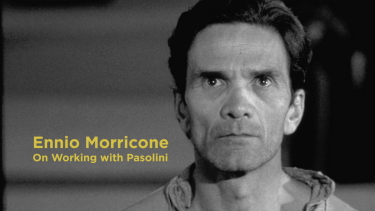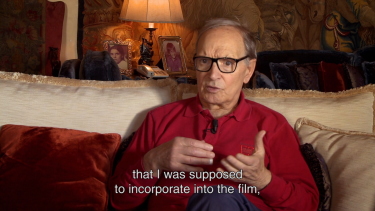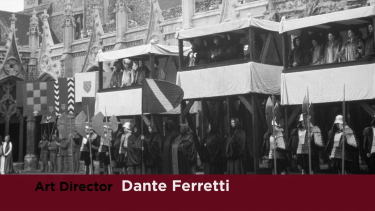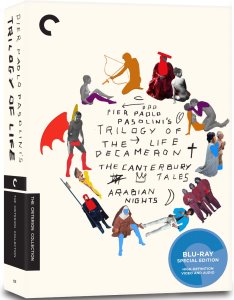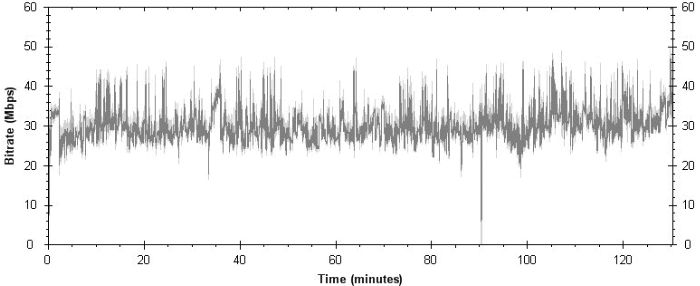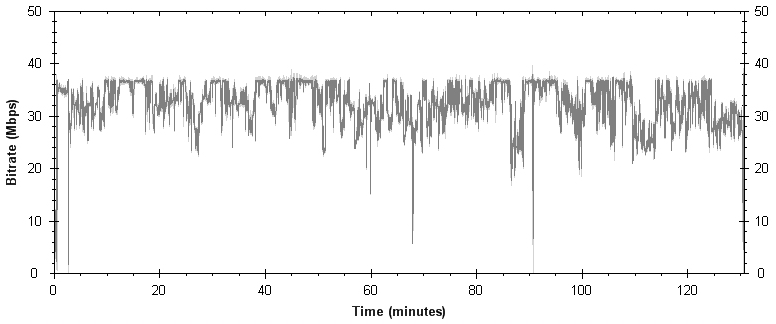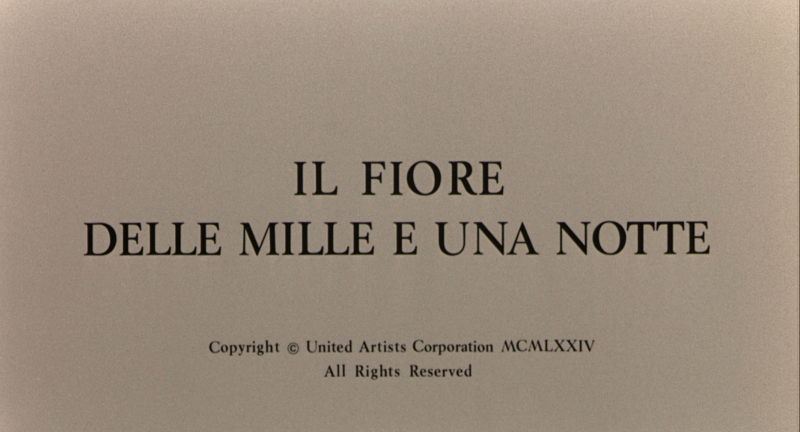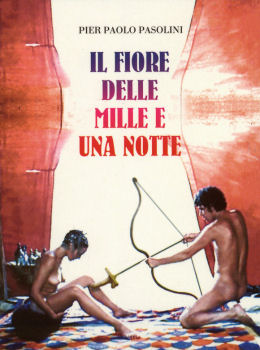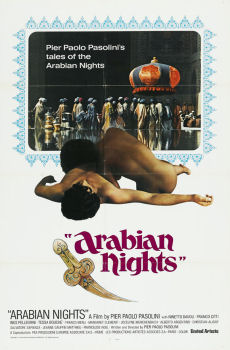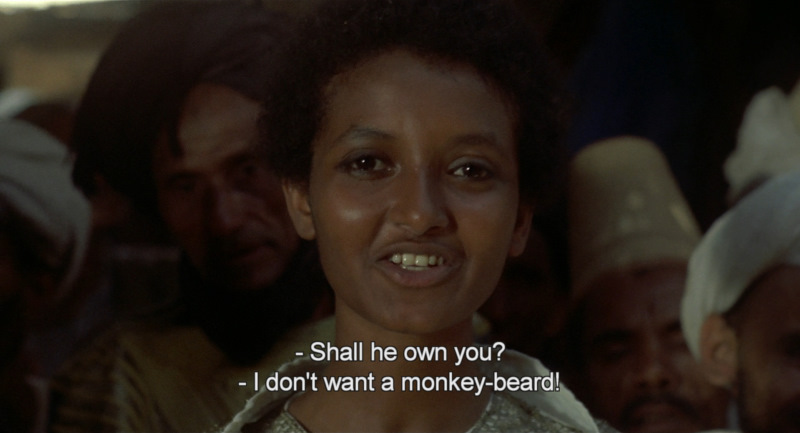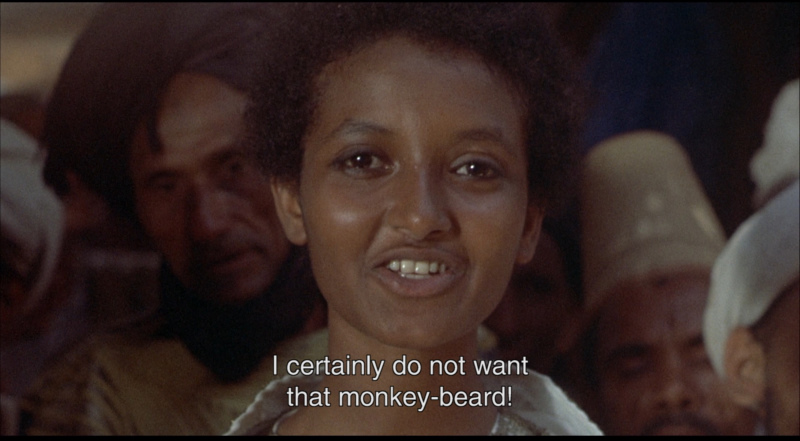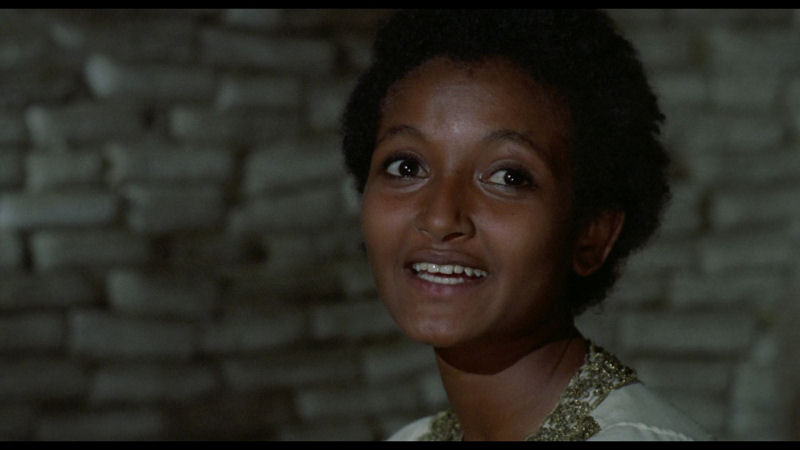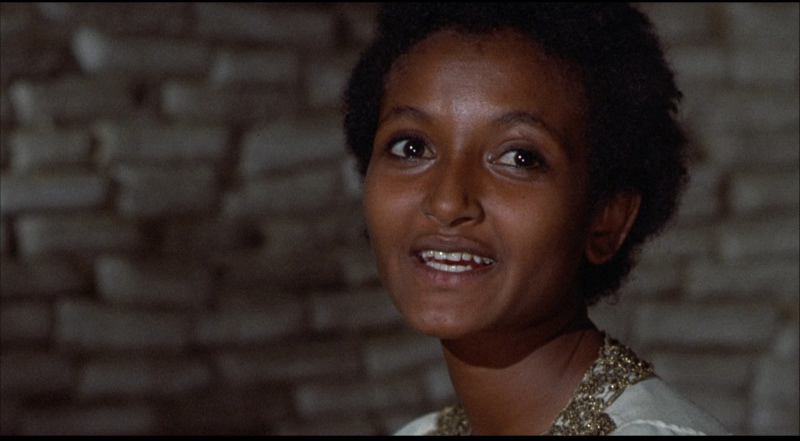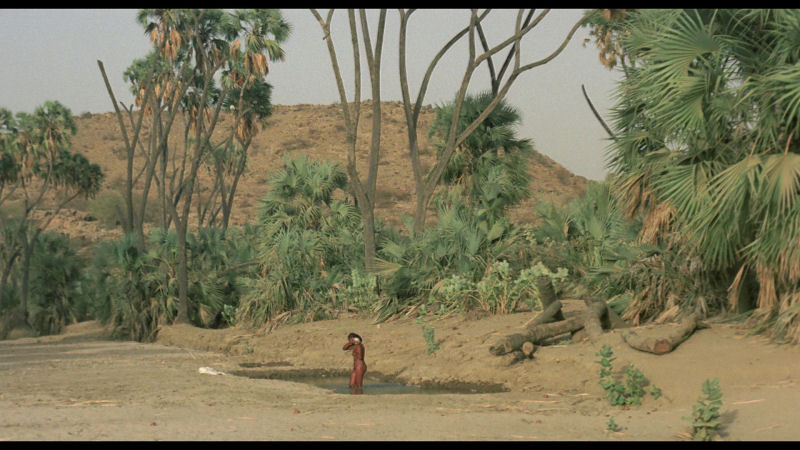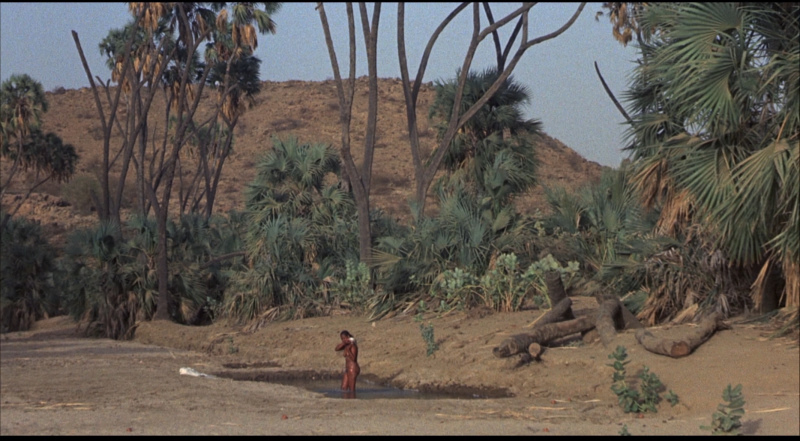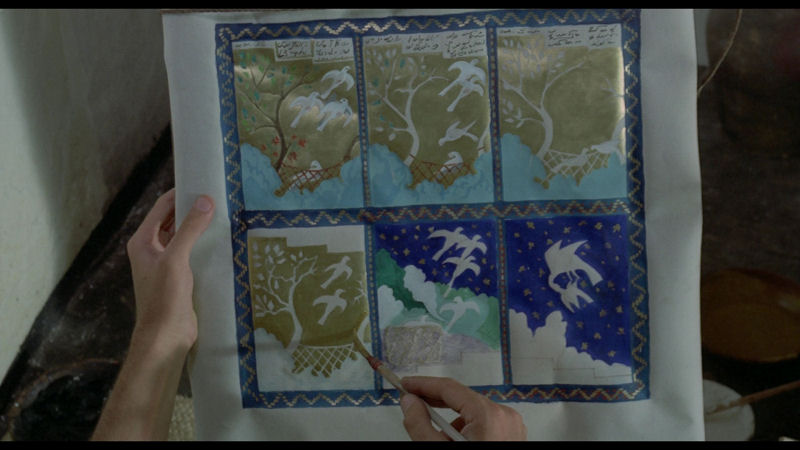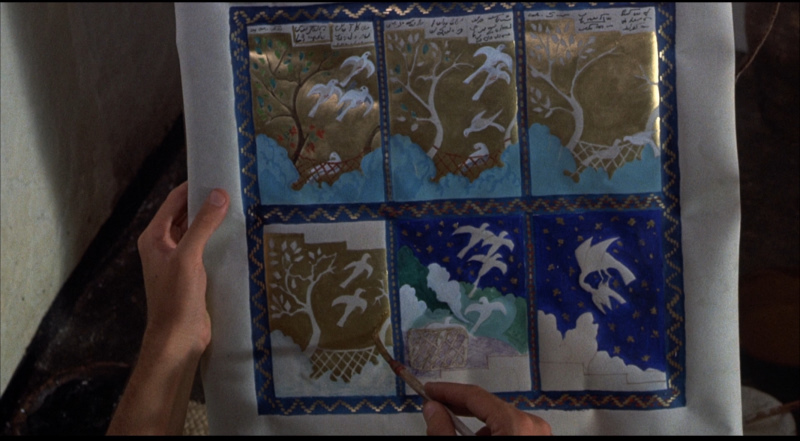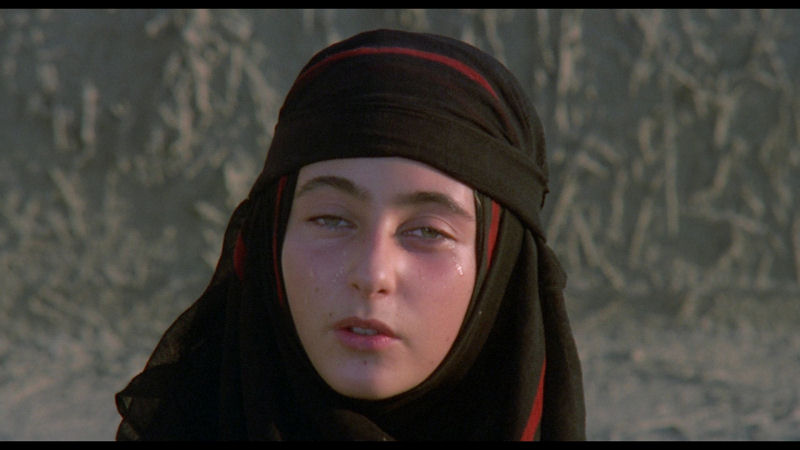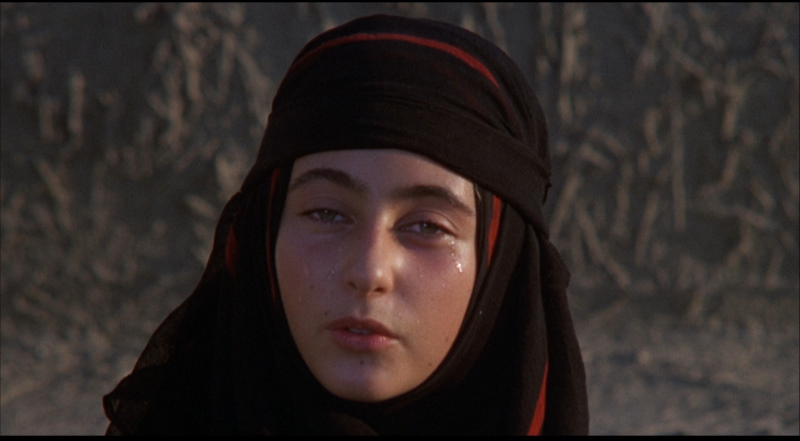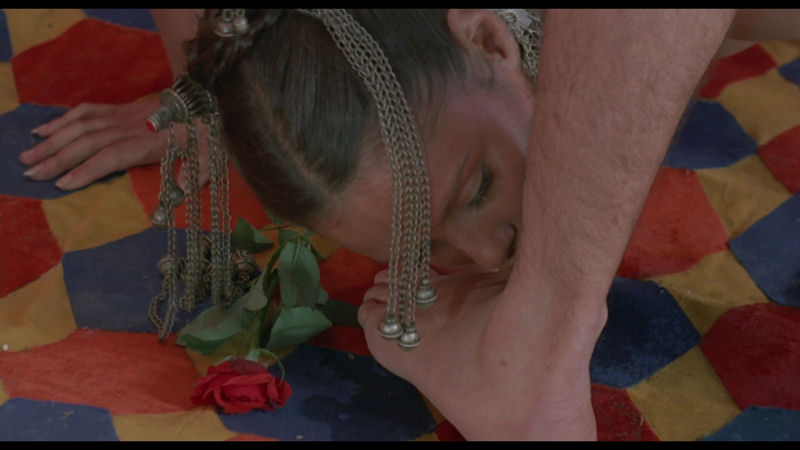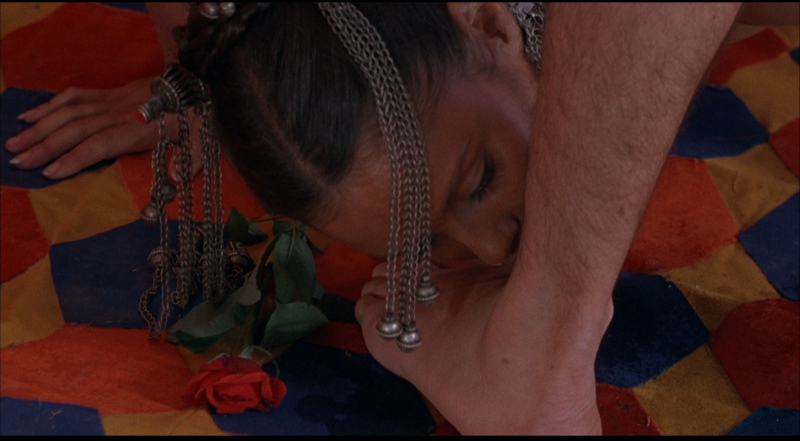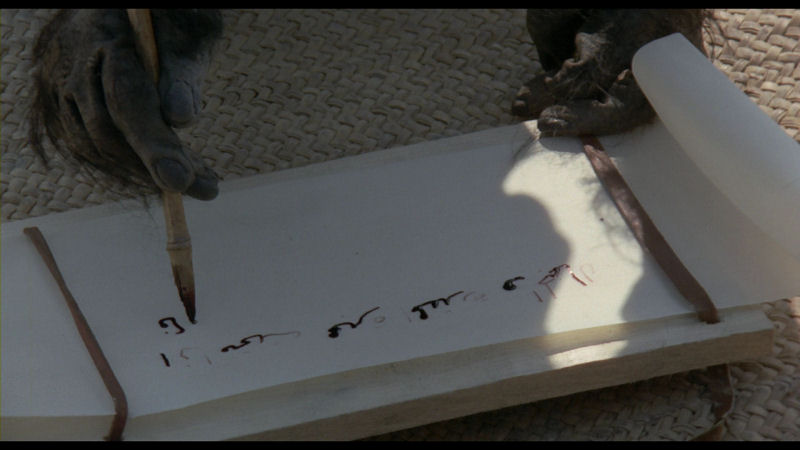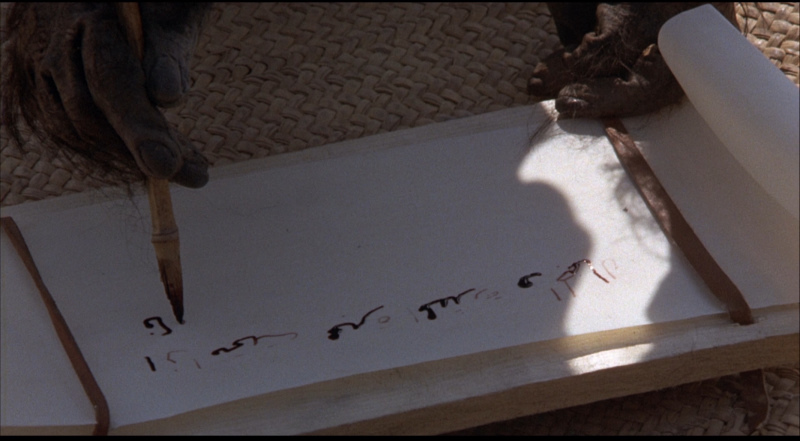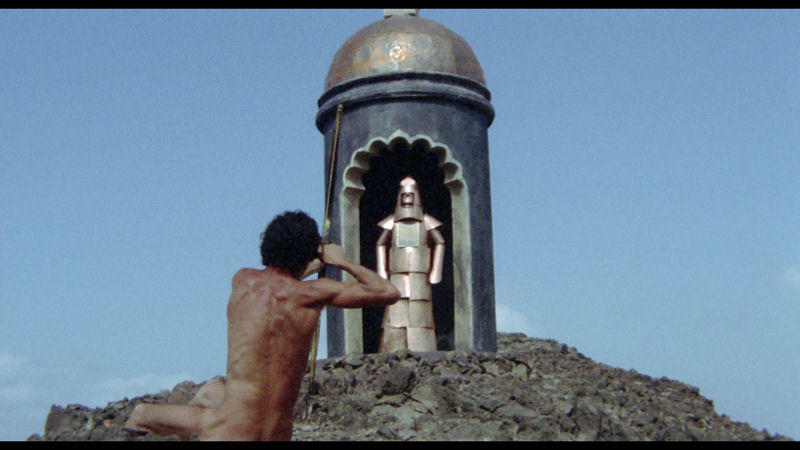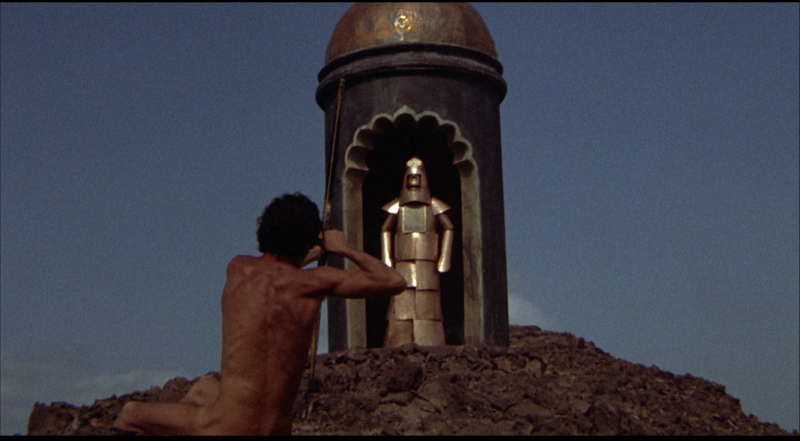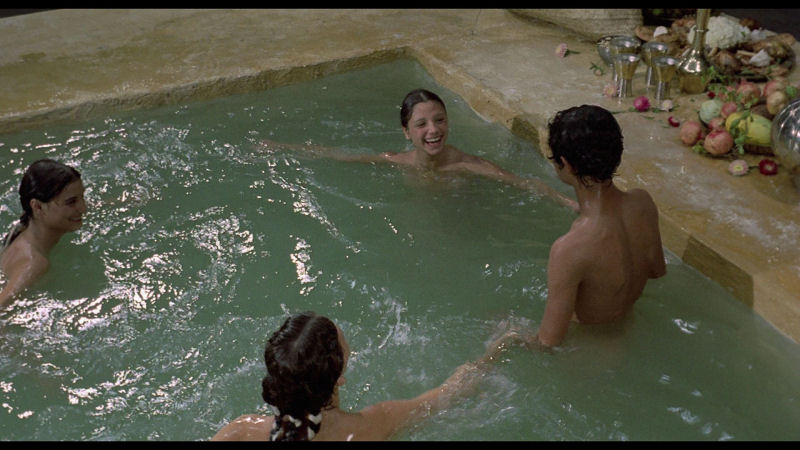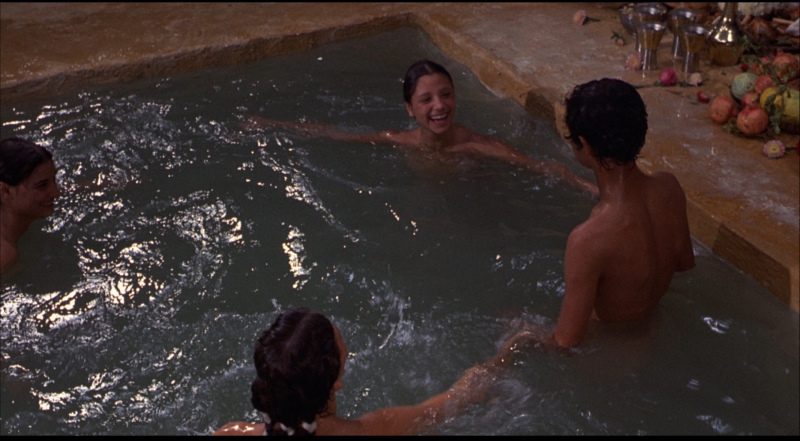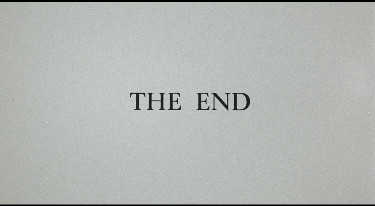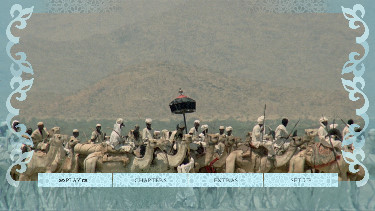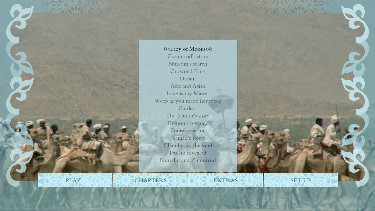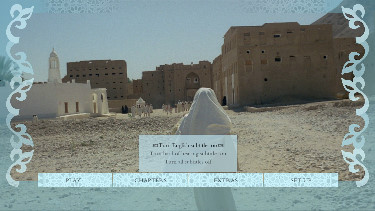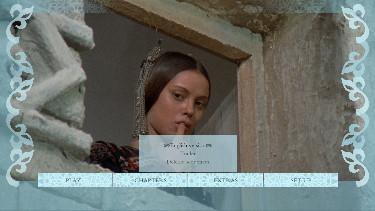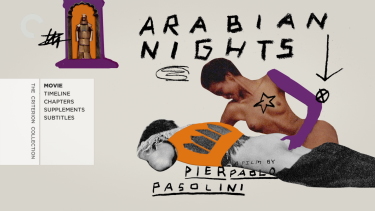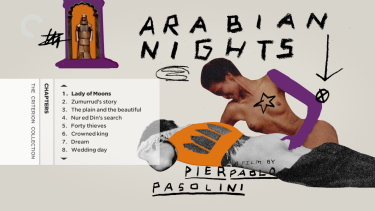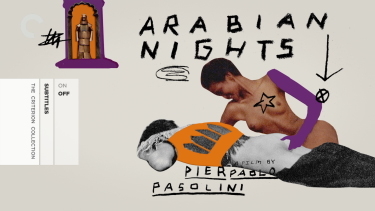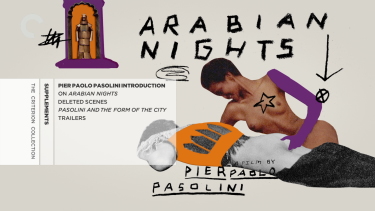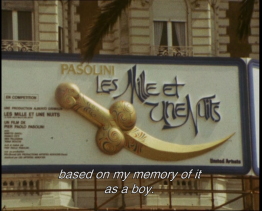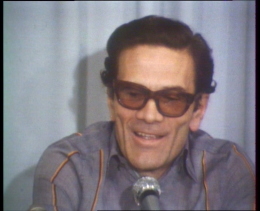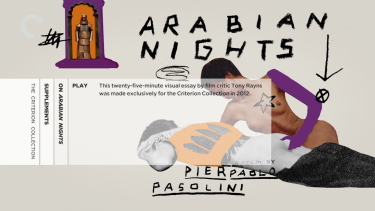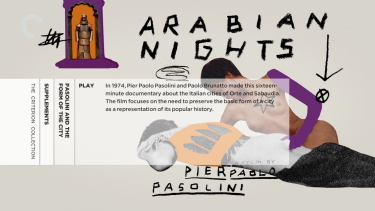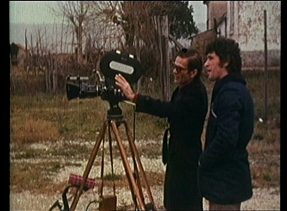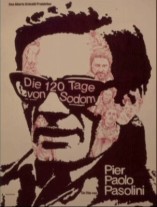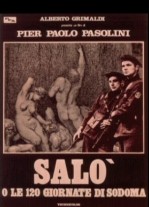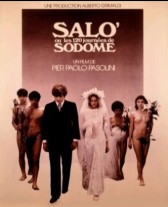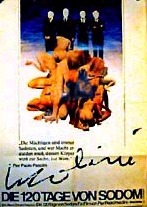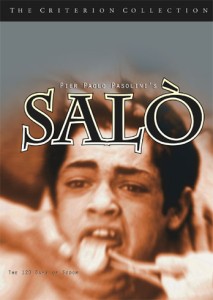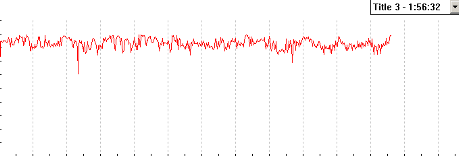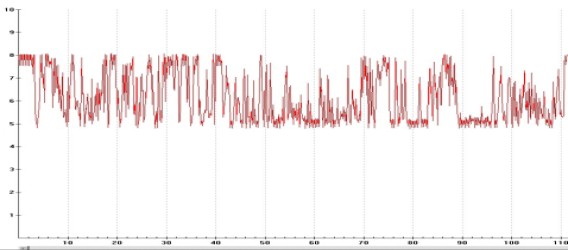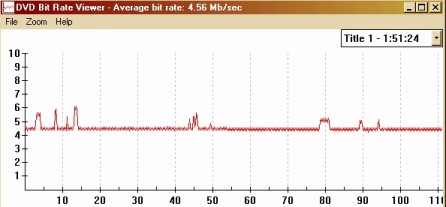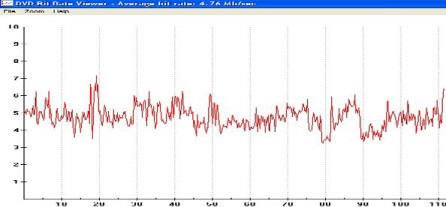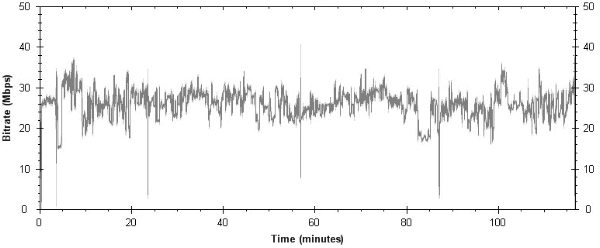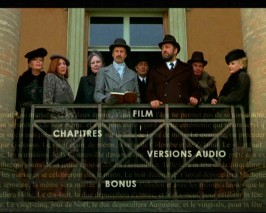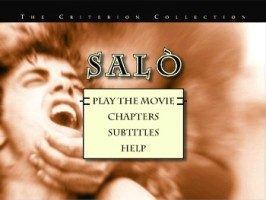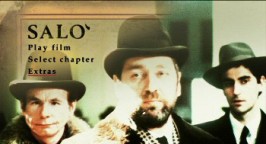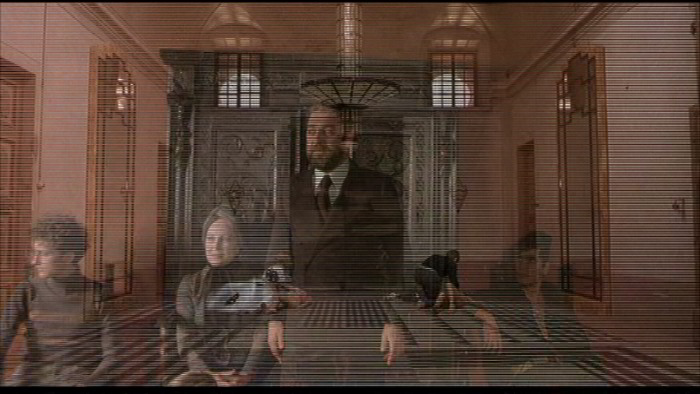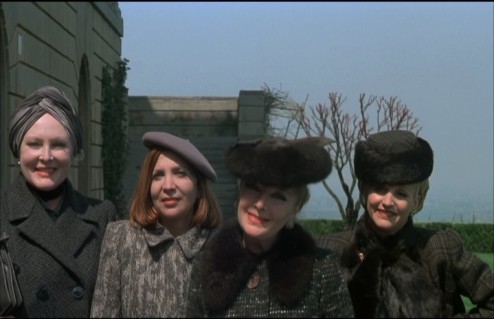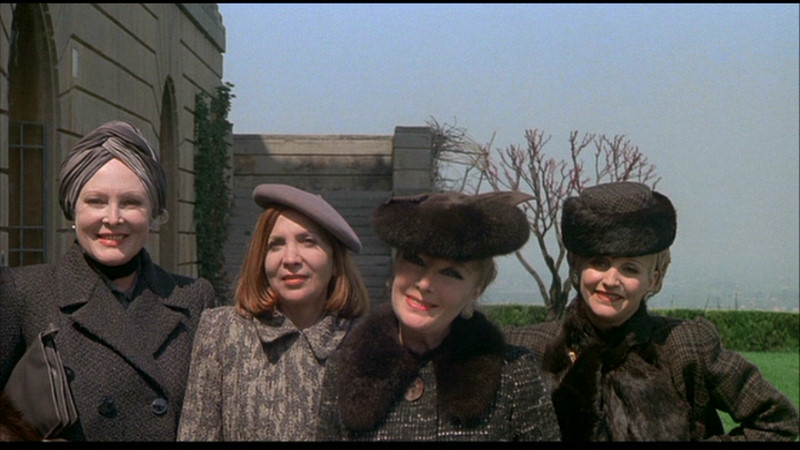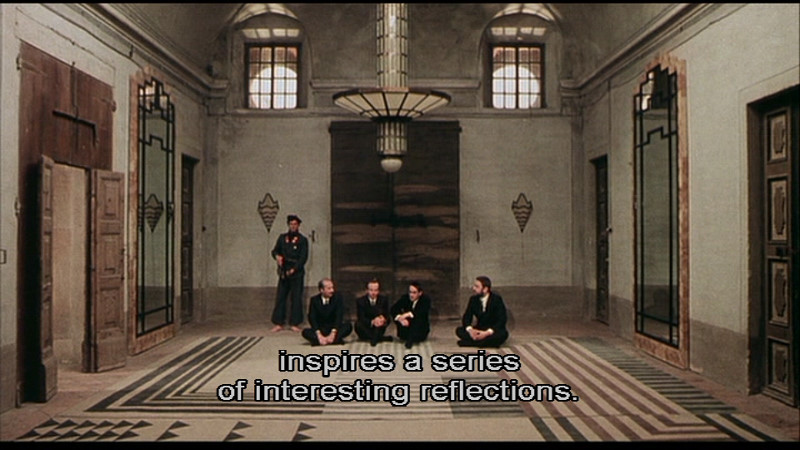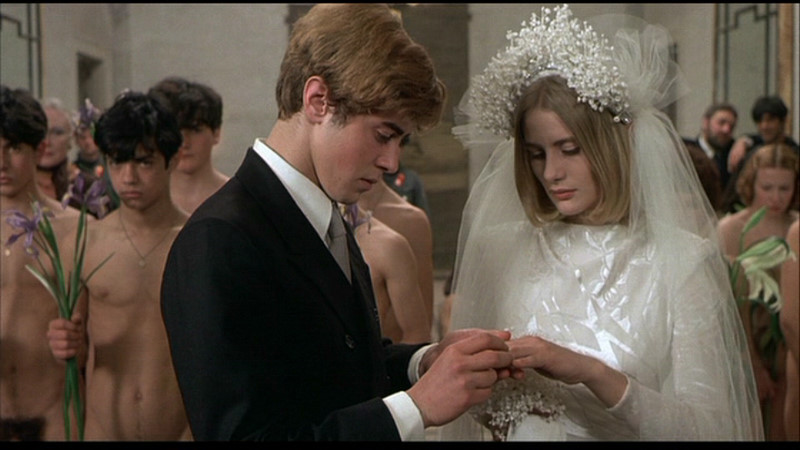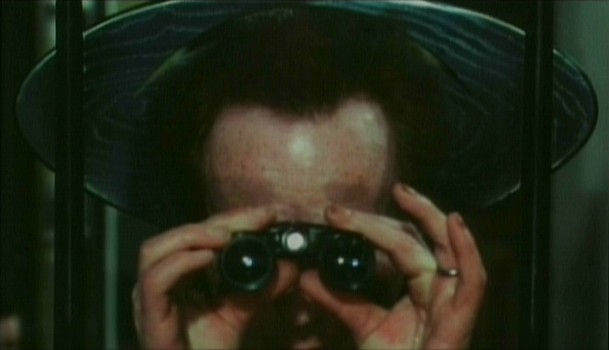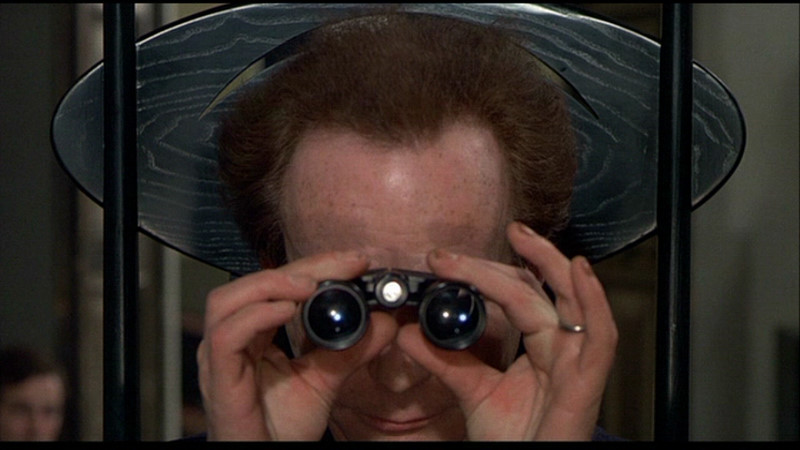|
We have started a Patreon page with the hopes that
some of our followers would be
willing to donate a small amount to keep DVDBeaver
alive. We are a tiny niche, so your
generosity is vital to our
existence.
We are talking about a minimum of
$0.10 - $0.15 a day, perhaps a
quarter (or more) to those who won't
miss it from their budget. It
equates to buying DVDBeaver a coffee
once, twice or a few times a month.
You can then participate in our
monthly
Silent
auctions,
and have exclusive access to many 'bonus' High Resolution screen captures - both
4K UHD
and
Blu-ray
(see
HERE). |
![]()
![]()

![]()
![]()
|
Search DVDBeaver |
S E A R C H D V D B e a v e r |
|
|
Pasolini Six Films 1968 - 1975 (7-Disc set) [Blu-ray]
Theorem
(1968)
Medea (1969)
The Decameron (1971)
The Canterbury Tales (1972)
Arabian Nights (1974)
Salò, or The 120 Days of Sodom (1975)
NOTE: DVD and Blu-ray versions of
Salò, or The 120 Days of Sodom (including 2019 BFI) are compared HERE
| Brutal and uncompromising, the films of
controversial director Pier Paolo Pasolini have shocked and outraged
audiences for decades, and their power remains undiminished to this
day. Presented together for the first time, these six films stand as
a testimony to his unique and untameable talents. In Theorem, a youthful Terence Stamp seduces each member of a bourgeois family. Medea features opera legend Maria Callas in a dark tale of betrayal and revenge. The Decameron, The Canterbury Tales and Arabian Nights form the bawdy Trilogy of Life, all with scores by the legendary Ennio Morricone. And Pasolini's final, shocking film, Salò, or The 120 Days of Sodom, sees him pushing his art to extremes. NOTE: These are the same as the 6 individual, BFI, 1080P (24fps) Blu-ray transfers (all dual-layered except from Salo - which is single-layered) - as reviewed/compared below (but not Dual-Format). It represents a significant savings buying in the 7-disc* package. The set contains alternative English language versions of all films, deleted sequences and alternative shots for selected films, a Theorem audio commentary by Italian-film expert Robert Gordon, Notes for an African Oresteia (Pasolini, 1970, 73 mins): an exploration of the parallels between Aeschylus Orestes trilogy and African politics, Whoever Says the Truth Shall Die (Philo Bregstein, 1981, 58 mins): the classic documentary on Pasolini's life and work, Walking with Pasolini (Roberto Purvis, 2008, 21 mins): documentary featuring Neil Bartlett, David Forgacs and Noam Chomsky. Pasolini and the Italian Genre Film (Alberto Farina, David Gregory, 2009, 35 mins): an exclusive documentary featuring Italian film producers Alfredo Bini and Luciano Martino. Also included Salò: Fade to Black (Nigel Algar, 2001, 24 mins): Mark Kermode explores the ongoing relevance of Pasolini's final film, Open Your Eyes! (Gideon Bachmann, 2008, 21 mins): on the set of Salò, Ostia (Julian Cole, 1987, 26 mins): short film in which Derek Jarman plays Pasolini plus an audio commentary by director Julian Cole, 'Ostia The Death of Pasolini' (Peter Christopherson, 2009, 7 mins): is a short homage, set to the song by Coil and the package contains an illustrated booklet featuring a new essay by Geoffrey Nowell-Smith and full film credits. * The extra (7th) disc is a PAL DVD of the overflow of supplements from the BFI Salo package. |
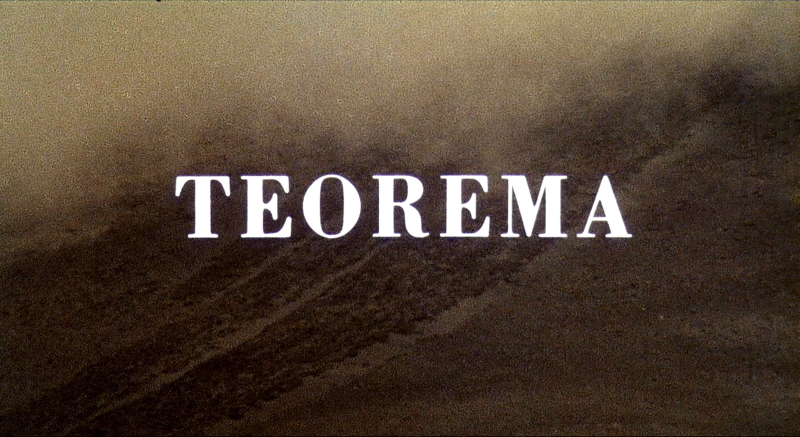
(aka "Theorem")
directed by Pier Paolo Pasolini
Italy 1968
|
A handsome, enigmatic stranger (Terence Stamp) arrives at a bourgeois household in Milan and successfully seduces each family member, not forgetting the maid. Then, as abruptly and mysteriously as he arrive, he departs. Unable to endure the void left in their lives, the father (Massimo Girotti) hands over his factory to the workers, the son abandons his vocation as a painter, the mother (Silvana Mangano) abandons herself to random sexual encounters, and the daughter sinks into catatonia. The maid (Laura Betti, Best Actress, Venice 1968), however, becomes a saint. *** In Theorem, Pasolini achieved his most perfect fusion of Marxism and religion with a film that is both political allegory and mystical fable. Terence Stamp plays the mysterious Christ or Devil figure who stays briefly with a wealthy Italian family, seducing them one by one. He then goes as quickly as he had come, leaving their whole life-pattern in ruins. What would be pretentious and strained in the hands of most directors, with Pasolini takes on an intense air of magical revelation. In fact, the superficially improbable plot retains all the logic and certainty of a detective story. With bizarre appropriateness, it was one of the last films made by Stamp before he virtually disappeared from the international film scene for some years. Excerpt from TimeOut Film Guide located HERE *** "Teorema is Pasolini's meditation on lack of communication and understanding among bourgeoisie. It's his "Discreet alienation of the bourgeoisie", if you will. The film is full of allegory images, that some find too pretentious. The eccentric Italian director's atmospheric tale of a prominent, dysfunctional Milanese family which engineers its own destruction when a spiritually minded stranger moves in on them." |
Posters
 |
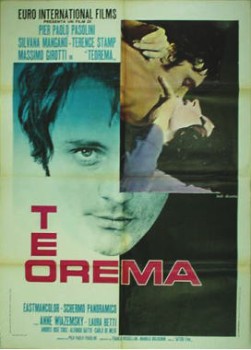 |
 |
Theatrical Release: September 4th, 1968 - Venice Film Festival
Reviews More Reviews DVD Reviews
Comparison:
|
Koch Lorber - Region 0 - NTSC vs. BFI - Region 2 - PAL vs. Films Sans Frontieres - Region 2 - PAL vs. BFI - Region 'B' - Blu-ray |
|
|
|
BFI - Region 'B' - Blu-ray |
|
1) Koch Lorber - Region 0 - NTSC LEFT 2) BFI - Region 2 - PAL - SECOND 3) Films sans Frontieres - Region 2 - PAL - THIRD 4) BFI - Region 'B' - Blu-ray RIGHT
|
| Box Covers |

|
|
|
|
| Distribution |
Koch Lorber Region 0 - NTSC |
BFI Region 2 - PAL |
Films Sans Frontieres Region 2 - PAL |
BFI - Region 'B' - Blu-ray |
| Runtime | 1:37:57 | 1:34:15 (4% PAL Speedup) | 1:34:06 (4% PAL Speedup) | 1:38:14.000 |
| Video |
1:1.85 Original Aspect Ratio
16X9 enhanced |
1:1.85 Original Aspect Ratio 16X9 enhanced Average Bitrate: 8.30 mb/s PAL 720x576 25.00 f/s |
1.85:1.00 Letterboxed WideScreen |
1080P Dual-layered Blu-ray Disc Size: 34,196,259,299 bytes Feature: 32,576,262,144 bytesCodec: MPEG-4 AVC VideoTotal Average Bitrate: 36.99 Mbps |
|
NOTE: The Vertical axis represents the bits transferred per second. The Horizontal is the time in minutes. |
||||
|
Bitrate:
Koch
|
|
|||
| Bitrate:
BFI
|
|
|||
| Bitrate:
Films Sans Frontieres
|
|
|||
| Bitrate:
Blu-ray
|
|
|||
| Audio | Italian (Dolby Digital 2.0) | Italian (Dolby Digital 2.0 Mono) |
Italian (Dolby Digital 2.0 Mono) |
LPCM Audio Italian 1536 kbps 2.0 / 48 kHz /
1536 kbps / 16-bit LPCM Audio English 1536 kbps 2.0 / 48 kHz / 1536 kbps / 16-bit Commentary: LPCM Audio English 1536 kbps 2.0 / 48 kHz / 1536 kbps / 16-bit |
| Subtitles | English, None | English, None | French and none | English, None |
| Features |
Release Information: Studio: Koch Lorber Aspect Ratio:
Edition Details: Chapters 13 |
Release Information: Studio: BFI Aspect Ratio:
Edition Details: • Commentary by Robert Gordon • Interview with Terence Stamp • 14-page liner notes booklet DVD
Release Date: September 24th, 2007 |
Release Information: Studio: Films Sans Frontieres
Aspect Ratio:
Edition Details: Chapters 5 |
Release Information: Studio: BFI Aspect Ratio: 1:1.85 1080P Dual-layered Blu-ray Disc Size: 34,196,259,299 bytes Feature: 32,576,262,144 bytesCodec: MPEG-4 AVC VideoTotal Average Bitrate: 36.99 Mbps
Edition Details: • Commentary by Robert Gordon • Trailer • 14-page liner notes booklet Fully illustrated booklet with essay by Geoffrey Nowell-Smith, review by Philip Strick and biographies of Pasolini and Stamp ON PAL DVD included: • Interview with Terence Stamp (33:14) as well as commentary and trailer Blu-ray
Release Date: May 27th, 2013 |
| Comments: |
NOTE: The below Blu-ray captures were obtained directly from the Blu-ray disc. The BFI Blu-ray is also available in a boxset; Pasolini Six Films 1968 - 1975 HERE. ADDITION: BFI - Region 'B' Blu-ray - May 2013': The new 1080P is a significant improvement over the DVD - even the strong BFI one from 2007. Colors are rich, bordering on saturation, and textured grain is far more apparent. This Blu-ray is dual-layered and the bitrate more than 4X that of the best SD transfer. The sepia-style shots in the opening are much more film-like (notice the title sequences above). Overall this is a beauty - with only a few minor speckles from total perfection.Audio offers original Italian or an English DUB - both via lossless linear PCM 2.0 channel tracks and there are optional English subtitles on the region 'B'-locked disc. Extras duplicate the BFI DVD with the excellent Robert Gordon commentary and the Blu-ray also offers a 2013 Re-Release trailer. There is a DVD included that seems to be a copy of the 2007 one with commentary, trailer and 1/2 hour Terrence Stamp interview. Super Blu-ray package from BFI - I was very impressed with the new image and we can certainly endorse for purchase. *** ADDITION: BFI - Region 2 - PAL Sept 07': Finally - this is the strongest image by a wide margin - the screen captures tell the story below. It is rich, dark at times but colors have a vibrancy and detail is vastly improved. There is some movement in the frame with all three editions. The progressive, anamorphic and dual-layered BFI DVD has Italian audio and optional English subtitles. Extras include a half hour interview with Terence Stamp and an excellent commentary by Italian Film expert Robert Gordon who is precise and professional in his manner - a great listen as his knowledge is extensive (as good as any commentarist I've heard this year). Included is a fully illustrated 14-page booklet including an essay by Italian film expert Geoffrey Nowell-Smith, review by Philip Strick from 1969 and biographies of Pasolini and Stamp. No contest - the BFI is the best! ***
ADDITION:
Koch Lorber - Region 0 NTSC Dec 05'-
The
Image in the Koch Lorber DVD is very similar to the BFI, although the Koch Lorber is anamorphic. The picture in this
DVD is fairly good, even though there is a lack of detail, and the picture
is quite pale. |
Menus
Koch
Lorber - Region 0 - NTSC
|
|
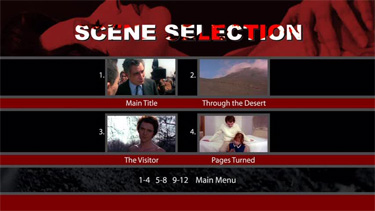 |
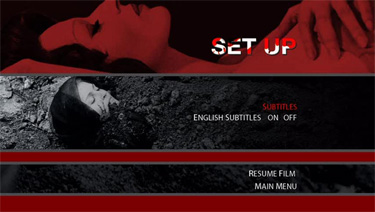 |
(BFI
- Region 2 - PAL - LEFT vs. Films sans Frontieres - Region 2 - PAL - RIGHT)
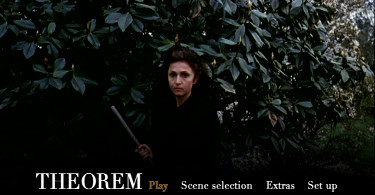 |
|
 |
|
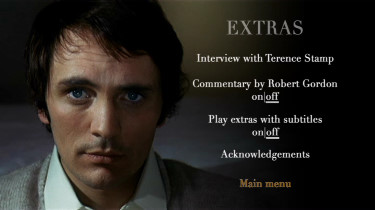 |
|
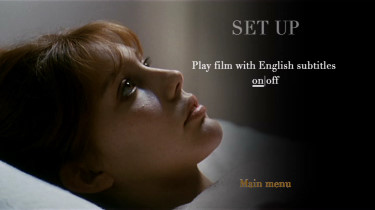 |
|
 |
BFI - Region 'B' - Blu-ray
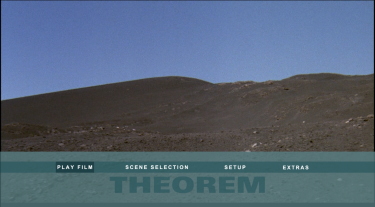 |
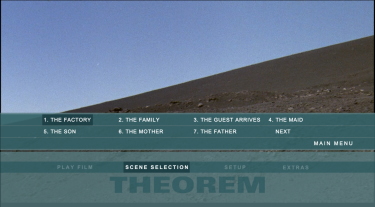 |
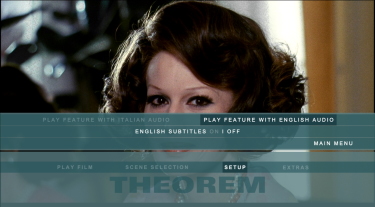 |
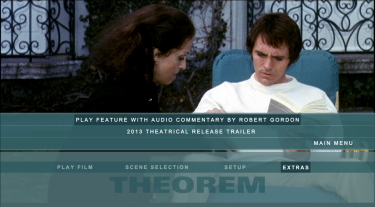 |
DVD (included with the Blu-ray)
|
|
|
CLICK EACH BLU-RAY CAPTURE BELOW TO SEE ALL IMAGES IN FULL 1920X1080 RESOLUTION
BFI Subtitle Sample (DVD TOP,
Blu-ray BOTTOM)
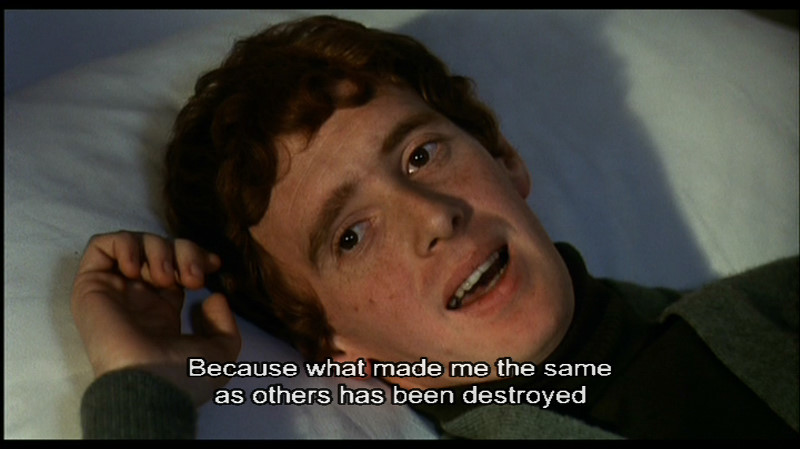 |
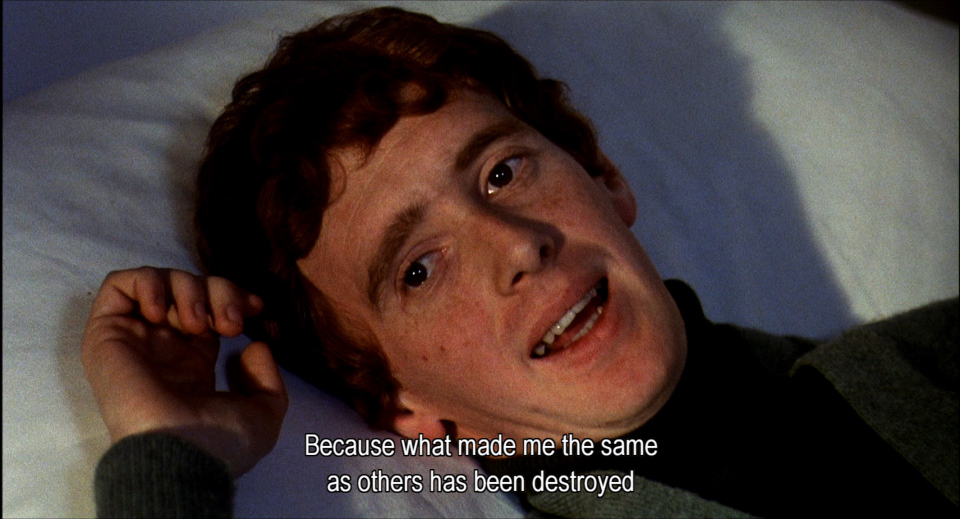 |
Screen Captures
|
1) Koch Lorber - Region 0 - NTSC TOP2) BFI - Region 2 - PAL - SECOND 3) Films sans Frontieres - Region 2 - PAL - THIRD 4) BFI - Region 'B' - Blu-ray BOTTOM
|
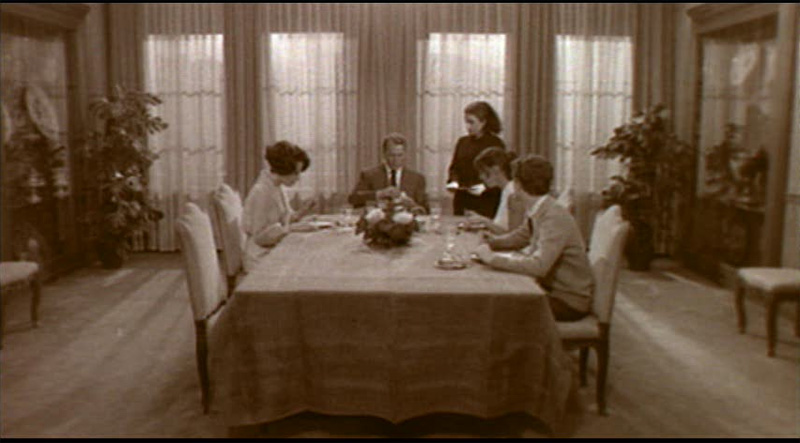 |
|
|
|
|
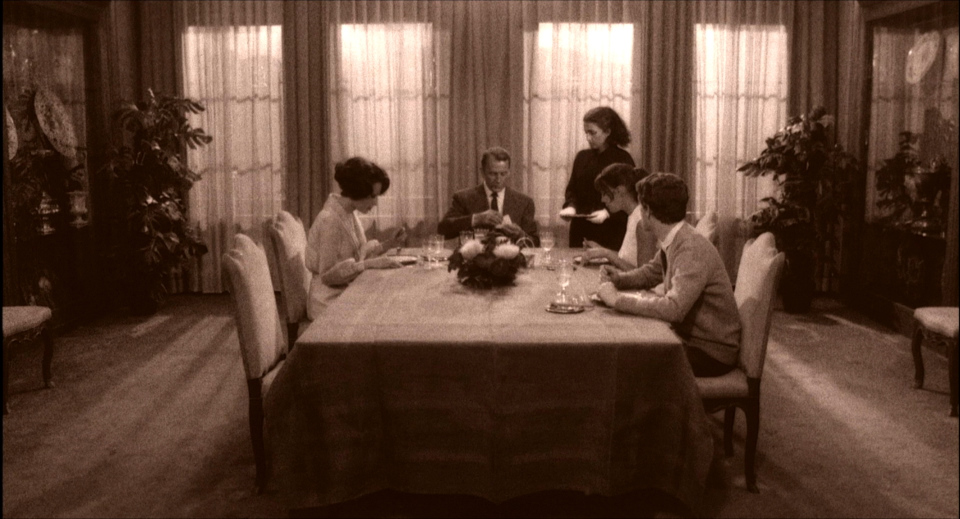 |
|
1) Koch Lorber - Region 0 - NTSC TOP2) BFI - Region 2 - PAL - SECOND 3) Films sans Frontieres - Region 2 - PAL - THIRD 4) BFI - Region 'B' - Blu-ray BOTTOM
|
|
|
|
|
|
|
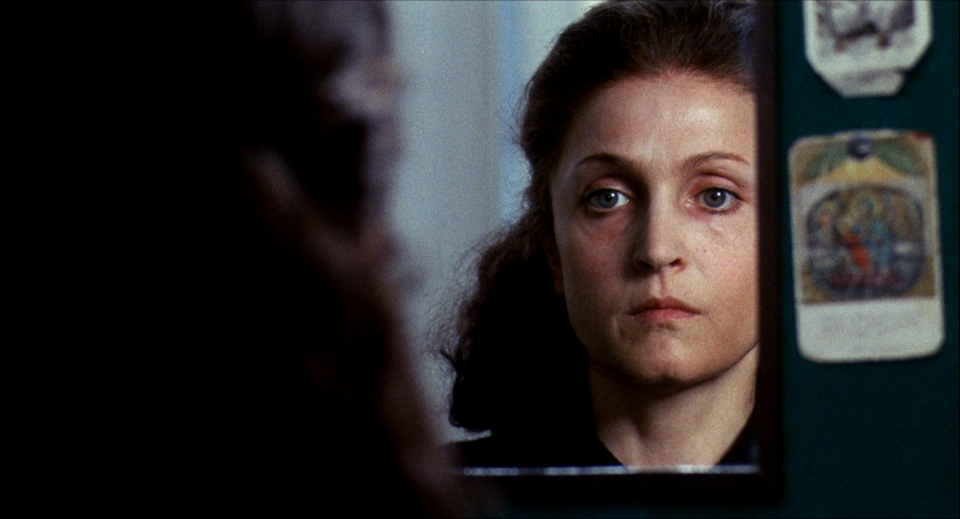 |
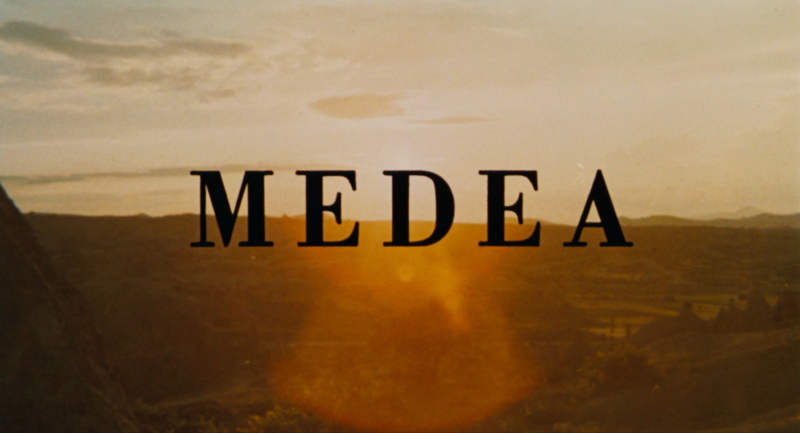
directed by Pier Paolo Pasolini
France / Italy / West Germany 1969
|
A mythical tale of love, betrayal and revenge, Medea is a fascinating collision of Freudian and Marxist themes from Italy's most controversial director, Pier Paolo Pasolini. Adapted from the Euripides drama, Pasolini's disturbing vision of personal and national conflicts stars operatic legend Maria Callas in the title role, offering an extraordinary performance as the high priestess Medea whose love is threatened by corrupt political ambition. A vivid and aesthetically challenging vision, Medea is a complex blend of classical mythology and contemporary social criticism. *** Among my favorite Pier Paolo Pasolini features is his 1970 film Medea, featuring the opera diva Maria Callas in the title role. Capturing the primitive mythic qualities of the Greek tragedy, Pasolini addresses the sensuality, passion and narrative complexity of the pre-Christian epic of infanticide. Showing the Mediterranean people as a shifting conglomeration of racially and culturally diverse warring tribes, Pasolini situates the story in a believable anthropological historic context -- something previously unattempted and still rarely done in popular films. Excerpt from Randy Turoff comments at Planet Out located HERE |
Posters
 |
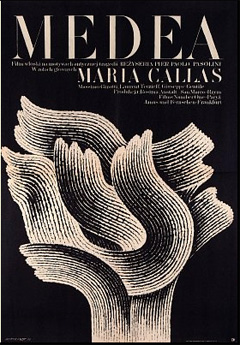 |
 |
Theatrical Release: Italy 28 December 1969
Reviews More Reviews DVD Reviews
Comparison:
Raro Video - Region 0 - PAL vs. BFI (Dual Format) - Region 'B' - Blu-ray
Big thanks to Per-Olof Strandberg for the Raro Review!
|
|
|
BFI - Region 'B' - Blu-ray |
Raro Video - Region 0 - PAL LEFT vs. BFI - Region 'B' - Blu-ray RIGHT
| Box Cover |
|
|
| Distribution |
Raro Video Region 0 - PAL |
BFI Region 'B' - Blu-ray |
| Runtime | 1:45:56 (4% PAL speedup) | 1:51:00.654 |
| Video |
1:1.85 Original Aspect Ratio
16X9 enhanced |
1080P Dual-layered Blu-rayDisc Size: 31,377,232,462 bytesFeature: 30,008,650,176 bytesVideo Bitrate: 29.15 MbpsCodec: MPEG-4 AVC Video |
|
NOTE: The Vertical axis represents the bits transferred per second. The Horizontal is the time in minutes. |
||
| Bitrate |
|
|
| Bitrate Blu-ray |
|
|
| Audio | DD 2.0 Italian, DD 2.0 English |
LPCM Audio English 1536 kbps 2.0 / 48 kHz / 1536 kbps /
16-bit LPCM Audio Italian 1536 kbps 2.0 / 48 kHz / 1536 kbps / 16-bit LPCM Audio Italian 1536 kbps 2.0 / 48 kHz / 1536 kbps / 16-bit |
| Subtitles | English, French, Spanish and None | English, and None |
| Features |
Release Information: Studio: Raro Video Aspect Ratio:
Edition Details: Chapters 11 |
Release Information: Studio: BFI
1080P Dual-layered Blu-rayDisc Size: 31,377,232,462 bytesFeature: 30,008,650,176 bytesVideo Bitrate: 29.15 MbpsCodec: MPEG-4 AVC Video
Edition Details: DVD Chapters 12 |
| Comments |
NOTE: These Blu-ray captures were taken directly from the Blu-ray disc.
The BFI Blu-ray is also available in a boxset; Pasolini Six Films 1968 - 1975 HERE.
ADDITION: BFI - Region 'B' - Blu-ray (November 11'): BFI have come out with a Dual-format (DVD and Blu-ray) of Pasolini's Medea. The 1080P image is represented via a dual-layered transfer with a high bitrate. It adds an earthy brown hue to the image and I have no information to suggest that this not more accurate. It looks great in-motion and the detail has risen to a higher level. The slightly boosted DVD had some edge enhancement and noise artifacts and there is minor noise on the Blu-ray - but it didn't disturb my viewing at all. The Blu-ray shows more information in the 1.85:1 frame. I, not only got the sense that this was very film-like but also Pasolini-film-like. It had important signature-style textures. This is coming out in North American via E1 HERE - released on the same week.
BFI offer, duplicate technical, linear PCM 2.0 channel stereo sound at 1536 kbps for the 'Restored Callas Audio', as well as Italian and alternate English language track. It sounds rough at times but still strong with some perceived depth and wonderful high end supporting the inherent quality. Of course the HD version doesn't have the PAL speedup. There are optional English subtitles on the region 'B'-locked Blu-ray disc.
The Blu-ray supplements are lean with only an original Italian trailer, and similar English teaser spot but the DVD includes some International release elements. Included is an illustrated booklet featuring essays, reviews and a biography. Fabulous release from BFI - and highly desirable for Pasolini and Callas fans. Medea has subtleties in its themes that are more obviously revealed upon re-visitation. Wonderful addition to the digital library. Gary Tooze ***
ON THE DVD: Here's very little to say: The picture is
Criterion standard, made from a restored print. The colors are very
beautiful, so is everything else. If you want to find some errors,
there are some softness in the large pictures, but it might be in
the original film elements. Some edge enhancement can also be
found., but otherwise this is a very fine DVD. |
Menus
Raro Video - Region 0 - PAL LEFT vs. BFI - Region 'B' - Blu-ray RIGHT
|
|
|
|
|
|
 |
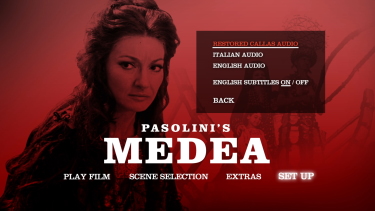 |
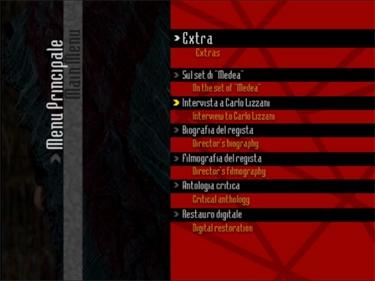 |
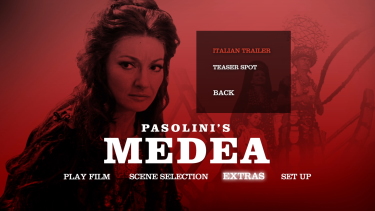 |
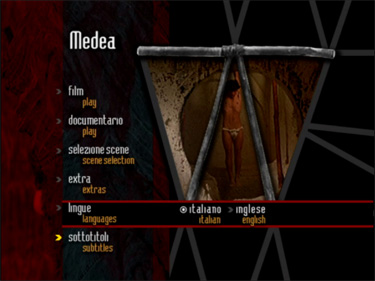 |
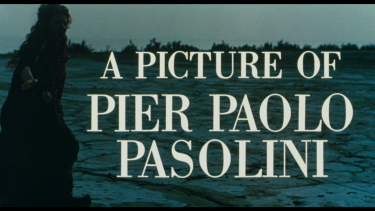 |
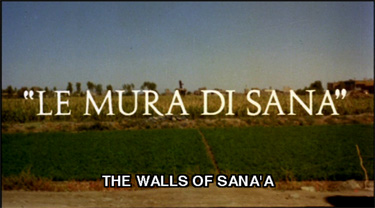 |
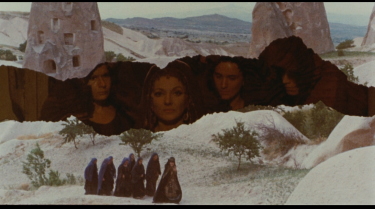 |
CLICK EACH BLU-RAY CAPTURE TO SEE ALL IMAGES IN FULL 1920X1080 RESOLUTION
Screen Captures
Raro Video - Region 0 - PAL TOP vs. BFI - Region 'B' - Blu-ray BOTTOM
|
|
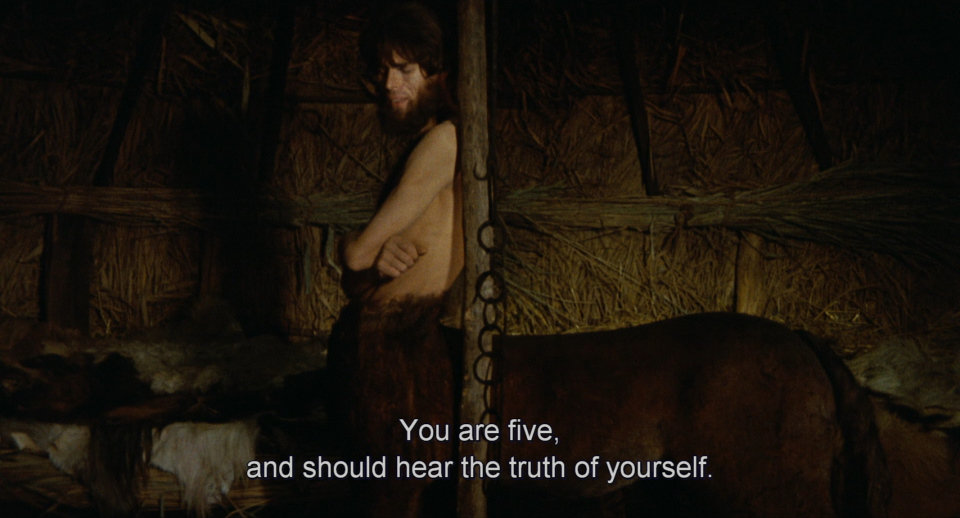 |
Raro Video - Region 0 - PAL TOP vs. BFI - Region 'B' - Blu-ray BOTTOM
|
|
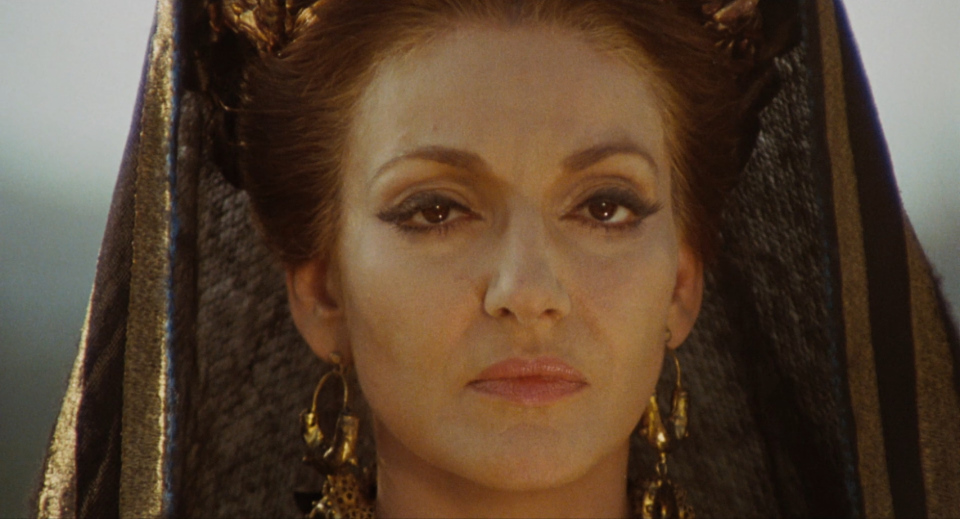 |
Raro Video - Region 0 - PAL TOP vs. BFI - Region 'B' - Blu-ray BOTTOM
|
|
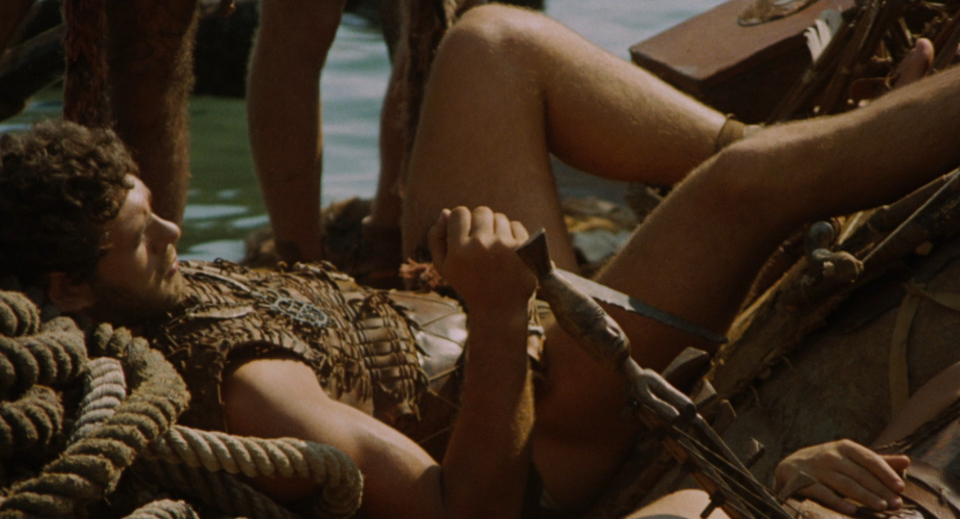 |

( aka 'Il Decameron' )
directed
by Pier Paolo Pasolini
Italy 1970
|
The first of Pasolini's colourful, entertaining and highly erotic Trilogy of Life films, The Decameron tells ten tales of sex and death, involving lusty nuns and priests, cuckolded husbands, murdered lovers and grave-robbers. Mastered from the original negative, this release features alternative audio options and an original trailer, and also includes Pasolini's rare 1970 film Notes Towards an African Orestes. *** The trilogy of The Decameron, The Canterbury Tales and the Arabian Tales of 1001 Nights create a mythical world where the nature of sex can be explored. The bawdy nature of the original stories helps to do this, but the fact that the originals are made up of many tales is important too. An effect that increases during the trilogy is the use of the frame. In The Decameron we see Pasolini, playing a pupil of the artist Giotto framing a scene with his hands. In the next scene we se e the people in the frame turned into a mural. Even the colors used in the film are to suggest a Renaissance painting (contrast with the use of color in Dick Tracy to mimic a pulp comic's ink). Ignoring the content the trilogy are beautiful to watch. Bu t it was the content that shocked manv people, and is the reason why The Decameron is still on the Vatican's black list. Those on the right were shocked by the graphic depiction of sex and those on the left were dismayed to find a lack of ideology. Pasolini answered them both with the comment that the 'ideology is really there, above your heads, in the enormous cock on the screen'. His justification for making an almost pornographic film was that he wished to show that it is bodies that are the most revolutionary things of all. They represent that which can not be codified. Yet it was clear that the people in the films were not sympathetic characters, and it becomes even more apparent in the later films, that these people are not really human, but sexual puppets controlled by instincts.
|
Posters
 |
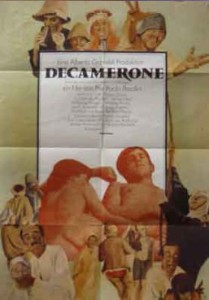 |
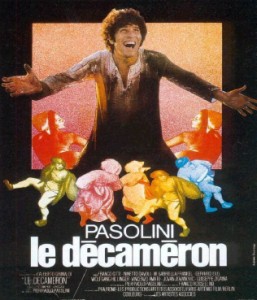 |
Reviews More Reviews DVD Reviews Decameron Web
Recommended Books on Italian Cinema (CLICK COVERS or TITLES for more information)
 |
 |
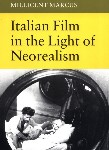 |
 |
 |
 |
 |
 |
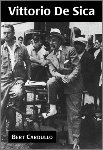 |
|
Italian Cinema: From Neorealism to the Present by Peter E. Bondanella |
Fellini on Fellini by Federico Fellini, Isabel Quigley |
Italian Film in the Light of Neorealism by Millicent Marcus |
Vittorio De Sica: Contemporary Perspectives (Toronto
Italian Studies) by Howard Curle, Stephen Snyder |
Italian Film (National Film Traditions) by Marcia Landy, David Desser |
Italian Movie Goddesses: Over 80 of the Greatest
Women in Italian Cinema by Stefano Masi, Enrico Lancia |
Italian Cinema by Maggie Gunsberg |
I, Fellini by Charlotte Chandler, Billy Wilder |
Vittorio De Sica: Director, Actor, Screenwriter by Bert Cardullo |
Comparison:
MGM - Region 1 - NTSC vs. BFI - Region 'B' -
Blu-ray vs. Criterion - Region 'A' - Blu-rayAll DVD screenshots courtesy of Ashirg. Thanks Gregory!
|
1) MGM - Region 1 - NTSC LEFT 2) BFI - Region 'B' - Blu-ray MIDDLE 3) Criterion - Region 'A' - Blu-ray RIGHT |
| Box Cover |
|
|
|
|
Available in a Dual Format Blu-ray package December 5th, 2011:
|
|||
| Distribution | MGM Region 1 - NTSC | BFI - Region 'B' - Blu-ray | Criterion Spine # 632 - Region 'A' - Blu-ray |
| Runtime | 1:50:56 minutes | 1:51:15.251 | 1:51:14.709 |
| Video | 1.85:1.00
Letterboxed WideScreen / anamorphic Average Bitrate: 5.4 mb/s NTSC 720x480 29.97 f/s |
1080P Dual-layered Blu-ray Disc Size: 45,301,449,286 bytesFeature: 32,112,297,408 bytes Codec: MPEG-4 AVC VideoTotal Average Bitrate: 38.45 Mbps |
1080P Dual-layered Blu-ray Disc Size: 47,312,491,240 bytes Feature: 32,169,965,568 bytes Codec: MPEG-4 AVC VideoTotal Average Bitrate: 34.49 Mbps |
| Bitrate: MGM |
|
||
| Bitrate: Blu-ray |
|
||
| Bitrate: Blu-ray |
|
||
| Audio | Italian
(Dolby Digital 2.0 Mono) |
LPCM
Audio English 2304 kbps 2.0 / 48 kHz / 2304 kbps / 24-bit LPCM Audio Italian 2304 kbps 2.0 / 48 kHz / 2304 kbps / 24-bit |
LPCM Audio Italian 1152 kbps 1.0 / 48 kHz / 1152 kbps / 24-bit |
| Subtitles | English, Spanish, French, None | English, None | English, None |
| Features |
Release Information: Studio: M G M, Inc Aspect Ratio(s): Edition Details:
DVD Release Date:
November 5, 2002 |
Release Information: Studio: BFI Video
1080P Dual-layered Blu-ray Disc Size: 45,301,449,286 bytesFeature: 32,112,297,408 bytes Codec: MPEG-4 AVC VideoTotal Bitrate: 38.45 Mbps
Edition Details: • 18-page liner notes, illustrated, booklet including essays, reviews and biography Blu-ray Release Date:
April 27th, 2009 |
Release Information: Studio: Criterion
1080P Dual-layered Blu-ray Disc Size: 47,312,491,240 bytes Feature: 32,169,965,568 bytes Codec: MPEG-4 AVC VideoTotal Average Bitrate: 34.49 Mbps
Edition Details: Blu-ray Release Date: November 13th, 2012Standard Blu-ray Case Chapters: 13 |
| Comments: |
NOTE: The below Blu-ray captures were taken directly from the Blu-ray disc. The BFI Blu-ray is also available in a boxset; Pasolini Six Films 1968 - 1975 HERE. ADDITION: Criterion - Region 'A' Blu-ray - November 2012': We seem to be running short of time as this release will soon be available to the public - so, in-lieu of a full review of each title, we will post the screen captures and technicals with these details hopefully informing some of the quality. I agree with David from our ListServ in regards to The Decameron when he states: "Gary, the Criterion unquestionably most resembles the gorgeous original release Tech prints." We will report more at a later date - including on the, marvelous, extensive extras. *** ADDITION: BFI - Region B' Blu-ray - May 09': Obviously a lopsided comparison with a heavily boosted bare-bones DVD from 2002 vs. a spanking new Blu-ray from the BFI. It just goes to show how far we've come - digitally speaking. The BFI shows quite a bit more information in the frame and it looks good if fairly 'lighter'. It is transferred in High-Definition using the original 35mm negative which, although seems possibly faded next to the MGM DVD, produces a near perfect presentation on my system. Outdoor close-ups show spectacular detail and the grain structure is intact although some minor noise also exists. Colors are strong and the texture is wonderful. The feature takes up over 32 Gig on the dual-layered disc with a bitrate approaching 40 Mbps. It's hard to imagine it looking any better for the comfort of your home theater. BFI have chosen to include options for both Italian and English versions. The latter starting with seamlessly branched English text credits and a DUB. One can also choose original Italian and both have clear and consistent linear PCM tracks. There are optional subtitles and my Momitsu tells me this is locked to region 'B'. The Blu-ray has some good extras. No commentary but generously included is Pasolini's, rare,1970 Appunti per un'Orestiade africana 1:33 - but in HD running an hour 13 minutes. There is the original Italian theatrical trailer - also in HD and a wonderful 18-page liner notes booklet with photos and “The Decameron” essay by Roger Clarke, “The Trilogy of Life” by Sam Rohdie, “The Decameron reviewed” by Nigel Andrews (from 1972), and “Pier Paolo Pasolini (1922-1975)” by Geoffrey Nowell-Smith. Great work again BFI - I can't wait to tuck into their Blu-rays of The Canterbury Tales and the Arabian Nights - released simultaneously and also Region 'B'-locked. It's an incredible time to be a film fan (and be region free for hi-def!)
Gary Tooze
*** ON THE MGM DVD (written in 2002): Both older BFI and Image discs originally used the non-anamorphic transfer in the previous incarnations of the film on DVD ( HERE ) . MGM did a brand new anamorphic transfer for this release. Colors are accurate and blacks are deep, but there's grain in the print. The print spots some specs, but nothing too major. After Salo discs, this is very satisfying release. Mono audio is without distortion. The extras are limited to a very grainy anamorphic US trailer and optional English, French or Spanish subtitles. |
DVD Menus
(MGM - Region 1 - NTSC LEFT vs. BFI - Region 'B' - Blu-ray RIGHT)
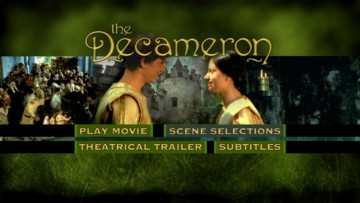 |
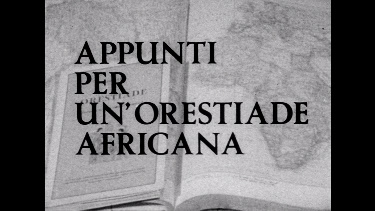 |
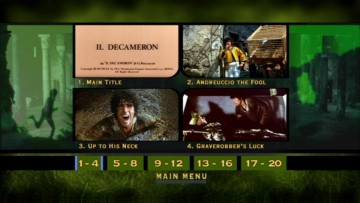 |
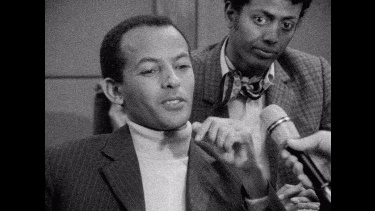 |
|
|
|
Criterion - Region 'A' - Blu-ray
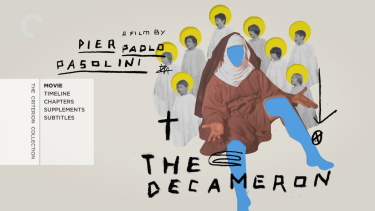 |
 |
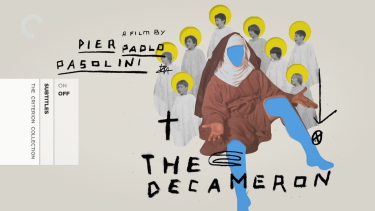 |
 |
 |
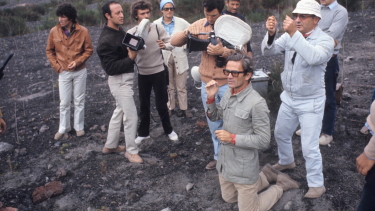 |
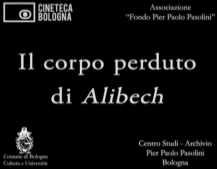 |
 |
|
|
|
CLICK EACH BLU-RAY CAPTURE BELOW TO SEE ALL IMAGES IN FULL 1920X1080 RESOLUTION
Screen Captures
|
1) MGM - Region 1 - NTSC TOP 2) BFI - Region 'B' - Blu-ray MIDDLE 3) Criterion - Region 'A' - Blu-ray BOTTOM |
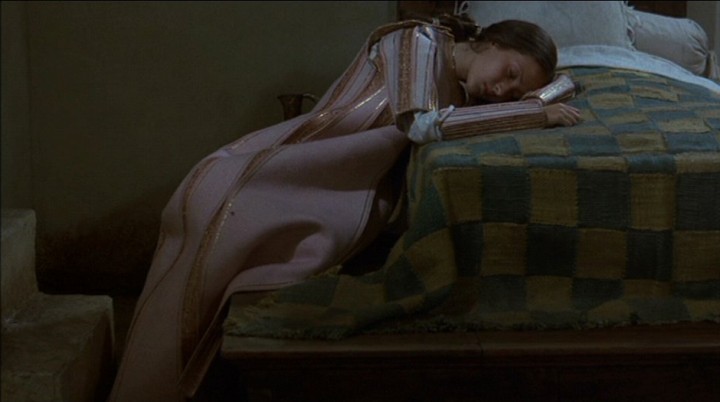 |
 |
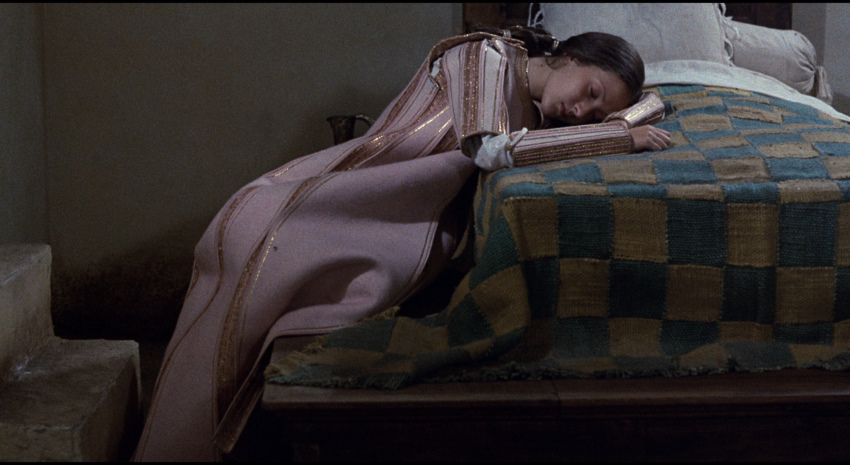 |
|
1) MGM - Region 1 - NTSC TOP 2) BFI - Region 'B' - Blu-ray MIDDLE 3) Criterion - Region 'A' - Blu-ray BOTTOM |
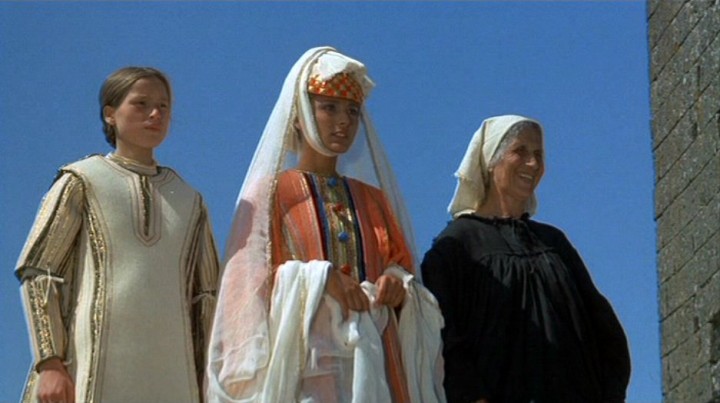 |
 |
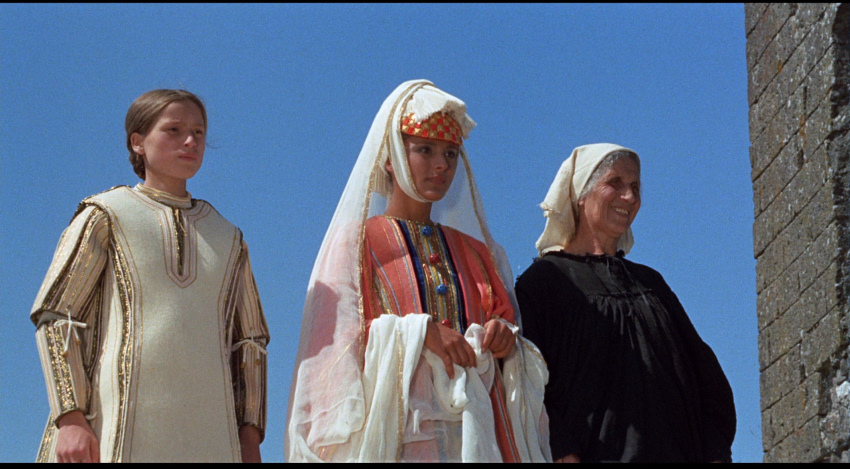 |
|
1) MGM - Region 1 - NTSC TOP 2) BFI - Region 'B' - Blu-ray MIDDLE 3) Criterion - Region 'A' - Blu-ray BOTTOM |
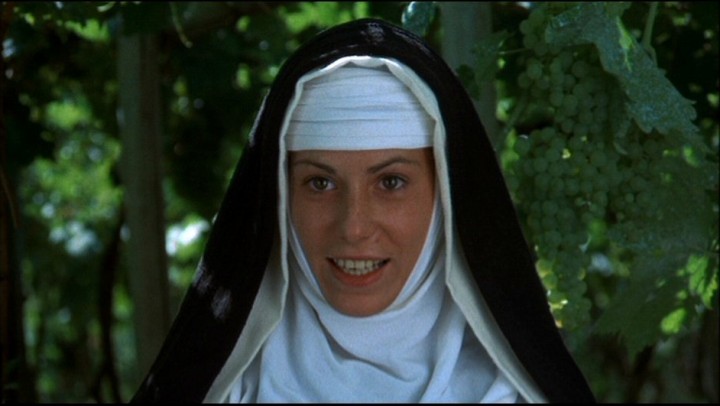 |
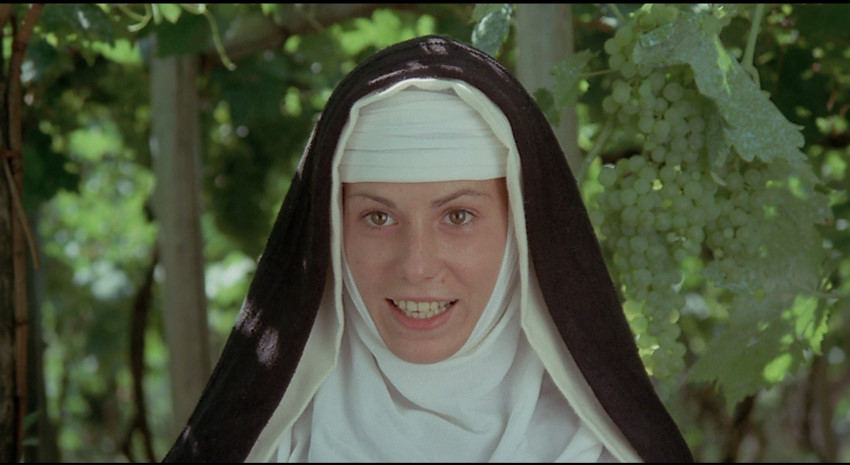 |
 |
|
The
Canterbury Tales [Blu-ray]
(aka "I racconti di Canterbury" or "Les contes de Canterbury" or "Pasolinis tolldreiste Geschichten" or "Los cuentos de Canterbury")
(Pier Paolo Pasolini, 1972)
The BFI Blu-ray is also available in a boxset; Pasolini Six Films 1968 - 1975 HERE.
Studio: Theatrical: Produzioni Europee Association Blu-ray: BFI / Criterion - Spine # 633
Disc: Region: 'B'-locked / Criterion is region 'A'-locked (as verified by the Momitsu region FREE Blu-ray player)Runtime: 1:51:00.778 / 1:51:24.010Disc Size: 39,081,623,986 bytes / 48,057,665,613 bytesFeature Size: 25,929,659,712 bytes / 32,849,786,880 bytesVideo Bitrate: 24.99 Mbps / 34.99 MbpsChapters: 10 (both) Case: Standard Blu-ray case Release date: April 27th, 2009 / November 13th, 2012
Video (same for both): Aspect ratio: 1.85:1 Resolution: 1080p / 23.976 fps Video codec: MPEG-4 AVC Video
(BFI - Region 'B' - Blu-ray TOP vs. Criterion - Region 'A' - Blu-ray - BOTTOM)
Audio:
LPCM Audio English 2304 kbps 2.0 / 48 kHz / 2304 kbps /
24-bit
LPCM Audio Italian 1152 kbps 1.0 / 48
kHz / 1152 kbps / 24-bit
Subtitles: English (SDH), English, none English, none
Extras: • Alternative English-language version (DUB and text alterations) - seamlessly branched • Trailer • Documentary: Pasolini and the Italian Genre Film (36:38 in HD!) • 18-page fully illustrated booklet including essays, reviews and biography
•
New visual essays by film scholars Patrick Rumble and Tony
Rayns, on The Decameron and Arabian Nights, respectively
Description: Eight of Geoffrey Chaucer’s lusty tales come to life on-screen in Pier Paolo Pasolini’s gutsy and delirious The Canterbury Tales, which was shot in England and offers a remarkably earthy re-creation of the medieval era. From the story of a nobleman struck blind after marrying a much younger and promiscuous bride to a climactic trip to a hell populated by friars and demons (surely one of the most outrageously conceived and realized sequences ever committed to film), this is an endlessly imaginative work of merry blasphemy, framed by Pasolini’s portrayal of Chaucer himself.
The Film: The second installment of Pasolini's Trilogy, with its depiction of unbridled fornication and a comically blasphemous visit to Hell in the closing five minutes, proved to be one of his bawdiest and most controversial films. Presented here in a transfer from the original negative, and with special features including alternative audio options, and a new documentary on Pasolini and the Italian genre film. Excerpt of review from BFI located HERE Posters
Image: NOTE: The below Blu-ray captures were ripped directly from the Blu-ray disc.
Previously I had only seen this film on a VHS tape released in the mid 1980's. The image, as one might expect, was badly cropped and suffered from almost every form of damage imaginable. Going in to this viewing, my expectations were not too high given how flat and unattractive that previous print was. How much improvement could there actually be? The answer is 'a lot'. I was blown away by the restoration work done by the folks at the BFI. In fact, I can say without the least amount of hyperbole that the films in this trilogy were the single biggest difference between a first and second viewing image quality that I have ever come across. This Blu-ray is gorgeous with brilliant colors but there has been some removal of the grain and it's a shame we have lost some of the film's natural textures. Skin tones appear un-manipulated. The framing has been correctly restored to 1.85:1 and it is exceptionally clean. You'd be hard pressed to find a single instance of dirt or damage. The detail hasn't suffered and produces and image that looks sharp and crisp. My only negative would be the lack of more substantial grain that may have succumbed to minor DNR processing - creating a somewhat less-film like experience than may be possible from the format. I think it still looks amazing. We seem to be running short of time as this release will soon be available to the public - so, in-lieu of a full review of each title, we will post the screen captures and technicals with these details hopefully informing some of the quality. I agree with David from our ListServ in regards to The Decameron when he states: "Gary, the Criterion unquestionably most resembles the gorgeous original release Tech prints." There is some information on all 4 edges lost here when compared to the BFI. We will report more at a later date - including on the, marvelous, extensive extras.
CLICK EACH BLU-RAY CAPTURE TO SEE ALL IMAGES IN FULL 1920X1080 RESOLUTION
(BFI - Region 'B' - Blu-ray TOP vs. Criterion - Region 'A' - Blu-ray - BOTTOM)
(BFI - Region 'B' - Blu-ray TOP vs. Criterion - Region 'A' - Blu-ray - BOTTOM)
(BFI - Region 'B' - Blu-ray TOP vs. Criterion - Region 'A' - Blu-ray - BOTTOM)
(BFI - Region 'B' - Blu-ray TOP vs. Criterion - Region 'A' - Blu-ray - BOTTOM)
(BFI - Region 'B' - Blu-ray TOP vs. Criterion - Region 'A' - Blu-ray - BOTTOM)
(BFI - Region 'B' - Blu-ray TOP vs. Criterion - Region 'A' - Blu-ray - BOTTOM)
(BFI - Region 'B' - Blu-ray TOP vs. Criterion - Region 'A' - Blu-ray - BOTTOM)
(BFI - Region 'B' - Blu-ray TOP vs. Criterion - Region 'A' - Blu-ray - BOTTOM)
(BFI - Region 'B' - Blu-ray TOP vs. Criterion - Region 'A' - Blu-ray - BOTTOM)
(BFI - Region 'B' - Blu-ray TOP vs. Criterion - Region 'A' - Blu-ray - BOTTOM)
(BFI - Region 'B' - Blu-ray TOP vs. Criterion - Region 'A' - Blu-ray - BOTTOM)
(BFI - Region 'B' - Blu-ray TOP vs. Criterion - Region 'A' - Blu-ray - BOTTOM)
(BFI - Region 'B' - Blu-ray TOP vs. Criterion - Region 'A' - Blu-ray - BOTTOM)
Audio & Music: The PCM 2.0 channel mono audio at 2304 kbps is quite crisp and clear. I had no problems whatsoever with the sound quality. There's no distortions or unwanted background noise (e.g. pops, cracks, hisses, etc.) here. Instead the audio is continuously crisp with both the dialogue and music sounding clear. Similarly, the subtitles (sample above) are easily read and unobtrusive. Finally, like most Italian cinema of the day, the film suffers from a loose synchronization process. This is inherent in the original print of the film and has been preserved by the BFI. Gary tells me his Momitsu has identified it as being a region 'B'-locked disc.
Operations: The disc uses the traditional pop-up menus found on most Blu-rays. The information is easy to find and access.
Extras: One may access, seamlessly branched, the alternate English version. It is simply the optional English DUB and unrestored English language credits (playing in the opening for 2:35 and the 'The End' at the completion) with a few text-related scenes in the film altered to English (at 16-minutes, 41-minutes and 110-minutes). Example:
Aside from an original trailer whose copious nudity puts American red-bands to shame, there's a 36-minute documentary on the effect of Pasolini's trilogy on soft-core Italian medieval literary epics--a genre that I didn't even know existed! This featurette with input from producers Alfredo Bini and Gabriele Crisanti, writer and critic Serafino Murri is in Italian with optional English subtitles. I found it amusing, informative, and certainly worth the time to watch. There's also an 18-page booklet containing essays “The Canterbury Tale” by Roger Clarke, “The Trilogy of Life” by Prof. Sam Rohdie, “The Canterbury Tales Reviewed” by Nigel Andrews (originally published in 1972), and “Pier Paolo Pasolini (1922-1975)” by Geoffrey Nowell-Smith (from the Oxford History of World Cinema). It is highly interesting to read the negative review from the film's initial release.
NOTE: Unusually , the BFI's webpage lists the standard DVD as containing "alternative shots". These aren't on the Blu-ray, but since I don't have the standard release I can't verify their existence.BFI - Region 'B' - Blu-ray
Criterion - Region 'A' - Blu-ray
Bottom line: With this film comprising one third of my favorite film trilogy, I would have likely recommended a purchase even if the quality wasn't such a drastic improvement from what has been available previously. Although the seemingly prurient nature of the film may turn some off, it has has multiple interpretations. Like the other films in his trilogy, "The Canterbury Tales" is a deeply moving tribute to life itself and the possibilities of a free and uncomplicated view of nudity and sexuality. I give this Blu-ray a strong recommendation and encourage others to check it out. It produced one of my favorite viewings of the year!
December 15th, 2009 November 8th, 2012
The BFI Blu-ray is also available in a boxset; Pasolini Six Films 1968 - 1975 HERE.
|
|
Arabian
Nights [Blu-ray]
(aka "Il fiore delle mille e una notte" or "A Thousand and One Nights" or "Flower of the Arabian Nights" or "Les mille et une nuits")
(Pier Paolo Pasolini, 1974)
The BFI Blu-ray is also available in a boxset; Pasolini Six Films 1968 - 1975 HERE.
Studio: Theatrical: Produzioni Europee Association Blu-ray: BFI / Criterion - Spine # 634
Disc: Region: 'B'-locked / Criterion is region 'A'-locked (as verified by the Momitsu region FREE Blu-ray player) Runtime: 2:10:08.133 / 2:10:39.456Disc Size: 42,080,952,152 bytes / 47,189,508,938 bytesFeature Size: 35,513,199,168 bytes / 35,731,261,440 bytesVideo Bitrate: 29.99 Mbps / 32.48 MbpsChapters: 16 / 20Case: Standard Blu-ray case Release date: April 27th, 2009 / November 13th, 2012
Video (same for both): Aspect ratio: 1.85:1 Resolution: 1080p / 23.976 fps Video codec: MPEG-4 AVC Video
(BFI - Region 'B' - Blu-ray TOP vs. Criterion - Region 'A' - Blu-ray - BOTTOM)
Audio:
LPCM Audio English 2304 kbps 2.0 / 48 kHz / 2304 kbps /
24-bit LPCM Audio Italian 1152 kbps 1.0 / 48 kHz / 1152 kbps / 24-bit
Subtitles: English (SDH), English, none English, none
Extras: • Alternative English-language version (2:10:15) • Original trailer • Deleted Sequences (21:11) • Fully illustrated booklet including essays, reviews and biography
•
New visual essays by film scholars Patrick Rumble and Tony
Rayns, on The Decameron and Arabian Nights, respectively
Description: Pier Paolo Pasolini traveled to Africa, Nepal, and the Middle East to realize this ambitious cinematic treatment of a selection of stories from the legendary The Thousand and One Nights. This is not the fairy-tale world of Scheherazade or Aladdin, though. Instead, the director focuses on the book’s more erotic tales, framed by the story of a young man’s quest to reconnect with his beloved slave girl. Full of lustrous sets and costumes and stunning location photography, Arabian Nights is a fierce and joyous exploration of human sexuality.
The Film: The final part of Pasolini's Trilogy of Life was two years in the making. The locations - Yemen, Ethiopia, Iran and Nepal - form a rich, exotic backdrop to these tales of slaves and kings, potions, betrayals, demons and, most of all love and lovemaking in all its myriad forms. Engrossing, mysterious, profound and liberating, Arabian Nights is an exquisitely dreamlike, sensuous and adult interpretation of the original folk tales, presented here in a beautiful new High-Definition restoration. Excerpt of review from BFI located HERE Posters
Image: NOTE: The below Blu-ray captures were ripped directly from the Blu-ray disc. While the image here isn't quite as detailed as the other two discs covering the trilogy, it is still far better than the film has looked since its initial release, and probably better than it'll ever look in the future. While some of the shots in here look positively flawless, a few here and soft, and even a couple of instances of show undesirable damage marks. These complaints are, however, very minor and it does seem to have substantially more grain than the others in the trilogy on BFI Blu-ray. By and large the restoration done on all three films is impressive. The skin tones here are generally good, and other colors (reds in particular) are a bit duller than the other two films but I appreciated the textures. We seem to be running short of time as this release will soon be available to the public - so, in-lieu of a full review of each title, we will post the screen captures and technicals with these details hopefully informing some of the quality. I agree with David from our ListServ in regards to The Decameron when he states: "Gary, the Criterion unquestionably most resembles the gorgeous original release Tech prints." There is some information on all 4 edges lost here when compared to the BFI. We will report more at a later date - including on the, marvelous, extensive extras.
CLICK EACH BLU-RAY CAPTURE TO SEE ALL IMAGES IN FULL 1920X1080 RESOLUTION
(BFI - Region 'B' - Blu-ray TOP vs. Criterion - Region 'A' - Blu-ray - BOTTOM)
(BFI - Region 'B' - Blu-ray TOP vs. Criterion - Region 'A' - Blu-ray - BOTTOM)
(BFI - Region 'B' - Blu-ray TOP vs. Criterion - Region 'A' - Blu-ray - BOTTOM)
(BFI - Region 'B' - Blu-ray TOP vs. Criterion - Region 'A' - Blu-ray - BOTTOM)
(BFI - Region 'B' - Blu-ray TOP vs. Criterion - Region 'A' - Blu-ray - BOTTOM)
(BFI - Region 'B' - Blu-ray TOP vs. Criterion - Region 'A' - Blu-ray - BOTTOM)
(BFI - Region 'B' - Blu-ray TOP vs. Criterion - Region 'A' - Blu-ray - BOTTOM)
(BFI - Region 'B' - Blu-ray TOP vs. Criterion - Region 'A' - Blu-ray - BOTTOM)
(BFI - Region 'B' - Blu-ray TOP vs. Criterion - Region 'A' - Blu-ray - BOTTOM)
Audio & Music: Like The Canterbury Tales - the PCM 2.0 channel mono audio at 2304 kbps is quite crisp and clear. There is no hiss or untoward distortion. Instead the audio is continuously crisp with both the dialogue and music sounding clear. Similarly, the subtitles (sample above) are easily read and unobtrusive. Finally, like most Italian cinema of the day, the film suffers from a loose synchronization process. This is inherent in the original print of the film and has been preserved by the BFI. Gary tells me his Momitsu has identified it as being a region 'B'-locked disc.
Operations: Simple and effective. The disc uses the traditional pop-up menus found on most Blu-rays. The information is easy to find and access.
Extras: One may access, seamlessly branched, the alternate English version. It is simply the optional English DUB and English language credits (playing in the opening for 2:22 of the presentation that display the 'United Artists' logo... and the 'The End' at the completion). There are no text-related scenes in the film requiring translation to English. I couldn't put English subtitles on the English DUB version.
There is another original trailer and a compilation of about 21 minutes worth of excised footage. Unfortunately, this material either was never dubbed or has had its original soundtrack lost, so the footage is set to the film's soundtrack. While I could be mistaken, some of this appears to be virtually identical to the material in the film itself. Finally, there's also a booklet containing new and reprinted essays on the film, including an negative review from its initial release.
Menus/ Extras
BFI - Region 'B' - Blu-ray
Criterion - Region 'A' - Blu-ray
Bottom line: L ike the other films in his trilogy, "Arabian Nights" is impacting and continues Pasolini's recurring themes. The image quality is imperfect but the best I have ever seen the film. I give this my highest recommendation and hope that you'll check it out. Admittedly, I am biased but these three releases are a strong contender for my pick for Blu-Ray of the year!December 15th, 2009 November 8th, 2012
The BFI Blu-ray is also available in a boxset; Pasolini Six Films 1968 - 1975 HERE.
|
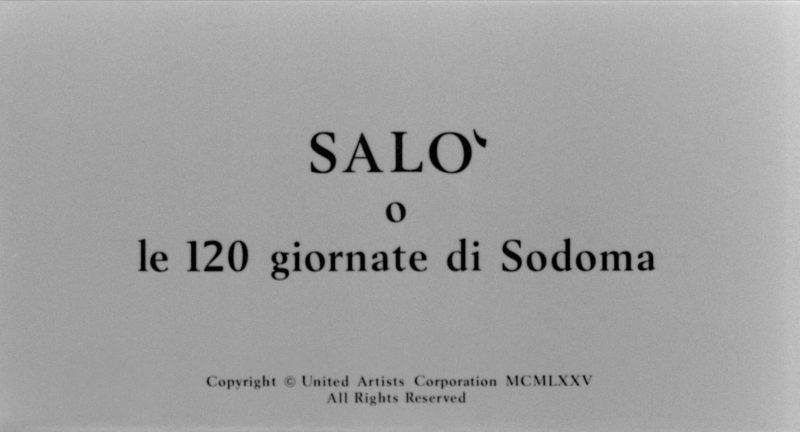
(aka 'Salo, or the 120 Days of Sodom' or 'Salo ou les 120 journées de Sodome')
directed by Pier Paolo Pasolini
Italy 1975
NOTE: DVD and Blu-ray versions of
Salò, or The 120 Days of Sodom (including 2019 BFI) are compared HERE
|
Pier Paolo Pasolini’s notorious final film, Salò, or the 120 Days of Sodom, has been called nauseating, shocking, depraved, pornographic . . . it’s also a masterpiece. The controversial poet, novelist, and filmmaker’s transposition of the Marquis de Sade’s 18th-century opus of torture and degradation to 1944 Fascist Italy remains one of the most passionately debated films of all time, a thought-provoking inquiry into the political, social, and sexual dynamics that define the world we live in. *** Set in the Nazi-controlled, northern Italian state of Salo in 1944, four dignitaries round up sixteen perfect specimens of youth and take them together with guards, servants and studs to a palace near Marzabotto. In addition, there are four middle-aged women: three of whom recount arousing stories whilst the fourth accompanies on the piano. The story is largely taken up with their recounting the stories of Dante and De Sade: the Circle of Manias, the Circle of Shit and the Circle of Blood. Following this, the youths are executed whilst each libertine takes his turn as voyeur. |
Posters (Click to enlarge where applicable)
Theatrical Release: November 25th, 1975 - Paris, France
Reviews More Reviews DVD Reviews R1 DVD Reviews R2
Comparison:
Gaumont Columbia Tristar - Region 2 - PAL vs. Criterion - Region 1 - NTSC vs. BFI - Region 2 - PAL vs. Criterion (REISSUE) - Region 1 - NTSC vs. BFI - Region 'B' - Blu-ray vs. Criterion - Region 'A' - Blu-ray |
The BFI Blu-ray is also available in a boxset; Pasolini Six Films 1968 - 1975 HERE.
|
|
|
BFI - Region 'B' - Blu-ray |
BFI Screen captures courtesy of Ashirg and Vincent Bouche of DVD Compare for the Gaumont screen captures
and Chris (CDNChris of Criterion Forum) for the Criterion REISSUE Caps
!
1) Gaumont Columbia Tristar - Region 2 - PAL TOP LEFT 2) Criterion (original) - Region 1 - NTSC - TOP CENTER 3) BFI - Region 2 - PAL - TOP RIGHT 4) Criterion (REISSUE) - Region 1 - NTSC - BOTTOM LEFT 5) BFI - Region 'B' - Blu-ray - BOTTOM MIDDLE 6) Criterion - Region 'A' - Blu-ray - BOTTOM RIGHT
|
| DVD Box Covers |
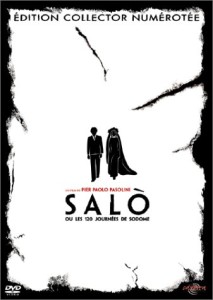 | | 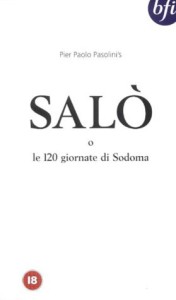 |
| Distribution | GCTHV (Gaumont Columbia Tristar Home Video) Region 2 (France) | Criterion Collection - Spine #17 Region 1 - NTSC | BFI Video Publishing Catalogue No: BFIVD510 Region 2 |
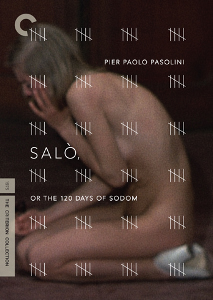 | 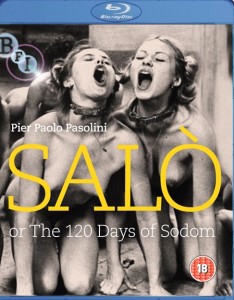 | 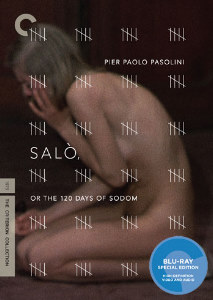 |
| Criterion Collection - Spine #17 (REISSUE) Region 1 - NTSC | BFI Video Region 'B' Blu-ray |
Criterion Collection - Spine # 17 Region 'A' Blu-ray |
| Distribution | GCTHV (Gaumont Columbia Tristar Home Video) Region 2 (France) | Criterion Spine #17 Region 1 - NTSC | BFI Video Publishing Catalogue No: BFIVD510 Region 2 |
Criterion Collection - Spine #17 (REISSUE) Region 1 - NTSC |
BFI Video Region B Blu-ray |
Criterion Collection - Spine # 17 Region 'A' Blu-ray |
| Runtime | 1:51:32 (4% PAL Speedup) | 1:56:24 | 1:51:46 (4% PAL Speedup) | 1:56:32 | 1:56:38 | 1:56:43.413 |
| Video | 1.66 Original Aspect Ratio Average Bitrate : 6.14 Mb/s PAL 720x576 25.00 f/s | 1.85:1 Widecreen Average Bitrate: 4.56 mb/s NTSC 704x480 29.97 f/s | 1.85:1 Widecreen Average Bitrate: 4.76 mb/s PAL 720x576 25.00 f/s |
1.85:1 Widecreen 16X9 Average Bitrate: 8.34 mb/s NTSC 704x480 29.97 f/s |
Feature 20.5 Gig Catalog - BFIB1001, 1080P Single-layered, Region B Blu-ray |
1080P Dual-layered Blu-ray Disc Size: 45,796,360,140 bytes Feature: 26,199,060,480 bytes Codec: MPEG-4 AVC Video Total Video Bitrate: 25.99 Mbps |
| Audio | - Italian Dolby Digital 1.0 (Mono) - French Dolby Digital 1.0 (Mono) - Movie was shot in Italian but French dub was considered by Pasolini as the "official" version. | Italian (Dolby Digital 1.0) | Italian (Dolby Digital 1.0) |
Italian (Dolby Digital 1.0), English DUB (Dolby Digital 1.0) | Italian PCM mono, English DUB (Dolby Digital 1.0) | LPCM Audio
Italian 1152 kbps 1.0 / 48 kHz / 1152 kbps / 24-bit Dolby Digital Audio English 192 kbps 1.0 / 48 kHz / 192 kbps |
| Subtitles | French or none | English or none | English (burnt in) | English or none | English or none | English or none |
| Features | Release Information: Studio: GCTHV Production Company : Carlotta Films Aspect Ratio : Widescreen letterbox - 1.66:1 Discographic information : - DVD encoding : region 2 - Layers : dual - Available Audio Tracks: Italian (Dolby Digital 1.0) and French (Dolby Digital 1.0) - Available subtitles : French and none - Limited numbered collector's edition (only 50 000 ex.) In the box, you find a huge booklet (about 50 pages) with photos and many notes about the film (in French) Extras : - "Salo d'hier à aujourd'hui", documentary (31:55) (Italian with French subtitles and French) - "Enfants de Salo", documentary (18:28) (French) - Image gallery - Original theatrical trailer (Italian with French subtitles) DVD release date : October 22, 2002 Amaray Case Chapters : 9 | Release Information: Studio: Criterion Aspect Ratio: Widescreen letterbox - 1.85:1 Extras : There is an inset by John Powers that briefly covers the controversy behind Pasolini and his final film. It was quite informative and gives valued insight into the film. DVD Release Date: August 11, 1998 | Release Information: Studio: BFI Video Publishing Aspect Ratio: Widescreen letterbox - 1.85:1 Extras : There is an inset by John Powers (same as Criterion) Pasolini’s own introduction to his film, is presented both as on-screen text and read aloud by the actor Nickolas Grace. It does a very good job of explaining in broad brushstroke terms what Pasolini was attempting. A brief biography of Pasolini, a couple of poster images and the news that three more Pasolini DVDs are coming out in summer 2001. The only other extra is a link to the BFI website and their collection of Salò-related papers, Click Here to access. DVD Release Date: April 2, 2001 |
Release Information: Studio: Criterion Aspect Ratio: Widescreen letterbox - 1.85:1
Edition Details: • "Salò": Yesterday and Today, a 33-minute documentary featuring interviews with director Pier Paolo Pasolini, actor-filmmaker Jean-Claude Biette, and Pasolini friend Nineto Davoli |
Release Information:
Feature 20.5 Gig Catalog - BFIB1001, 1080P Single-layered, Region B Blu-ray
DISC ONE (Blu-ray) · Fully Complete & Uncut, telecined from original Italian restoration negatives
· BD: 1.856:1 (1080p, 24fps) / BD25 / PCM mono · Original Italian language version (with optional English subtitles) · Original English language version (with optional HoH subtitles) · Original Italian trailer (with optional English subtitles) · Coil - Ostia (the Death of Pasolini) The original 1987 track from Coil's celebrated second album, Horse Rotorvator, with a newly created video accompaniment, shot especially for this release, by Peter Christopherson.
DISC TWO (Standard Def PAL DVD Disc, to be included in both DVD & BD editions) · On set footage and interviews (1974, 25m) – newly created documentary using full colour footage shot in 1974 by acclaimed film journalist and Pasolini expert Gideon Bachmann. · Featurettes: Open Your Eyes and Walking With Pasolini · Whoever Says the Truth Shall Die (1981, 58m) Philo Bregstein's classic documentary on the life and death of Pier Paolo Pasolini. · Fade to Black (2001, 25m) – documentary with Mark Kermode exploring the ongoing relevance and power of Pasolini's controversial masterpiece, with Bernardo Bertolucci and other leading directors. · Ostia (1991, 25m, with optional director commentary track) – Julian Cole's short film about the last days of Pasolini, starring Derek Jarman.
Fully illustrated booklet · Newly commissioned essay by Sam Rohdie (Italian film scholar and author on Pasolini) · Sight & Sound article by Gideon Bachmann incorporating his on-set diary · 1979 review of the film by Gilbert Adair · James Ferman letter to the Director of Public Prosecutions · Cast and credits for the film · Pasolini biography by Italian film specialist Geoffrey Nowell-Smith · Photographs of Pasolini at work on set |
Release Information: Studio: Criterion 1080P Dual-layered Blu-ray Disc Size: 45,796,360,140 bytes Feature: 26,199,060,480 bytes Codec: MPEG-4 AVC Video Total Video Bitrate: 25.99 Mbps Edition Details: • "Salò": Yesterday and Today, a 33-minute documentary featuring interviews with director Pier Paolo Pasolini, actor-filmmaker Jean-Claude Biette, and Pasolini friend Nineto Davoli Transparent Blu-ray Case Chapters: 23 |
NOTE: The Vertical axis represents the bits transferred per second. The Horizontal is the time in minutes | |
| Bitrate: Criterion (REISSUE) |
|
| Bitrate: Gaumont
|
|
| Bitrate: Criterion |
|
| Bitrate: BFI |
|
| Bitrate: BFI Blu-ray |
NO BITRATE FOR BFI BLU-RAY YET |
| Bitrate:
Criterion Collection - Spine # 17 |
|
| Comments | NOTE: The below Blu-ray captures were ripped directly from the Blu-ray disc. ADDITION: Criterion - Region 'A' - Blu-ray - September 11': This comparison need not be as confusing as we have made it. We have relied on our initial reference review(s) from well over a decade ago. As opposed to redoing the captures to match our current standards - I ended up selling my original Criterion DVD for some un-Godly amount of money many years ago - so it was not possible. To quote a ginormous understatement - the film always left a sour taste in my mouth <pun intended) and I only revisit to perpetuate this comparison page. I'll make some quick comments - and perhaps we can move on: 1) Yes, the Criterion Blu-ray shows edge-enhancement (just like the BFI - although less prominent). It was probably on the reissue DVD but the 1080 resolution makes it easier to identify. I suspect that it is on D1 master - no fault of the disc transfers. 2) the dual-layered Criterion image seems to me to have more balanced colors. The BFI varies from overly pale to occasionally reddish. 3) There is movement in the frame but I think the BFI shows more information in the right and bottom edges. 4) The BFI frequently looks green - but have no idea of how authentic this is to theatrical. 5) Audio seems a wash with both having the PCM - exporting mono, but I honestly didn't do any testing. Ditto for both of the English DUBs. 6) The Criterion Blu-ray is still without the 25-second sequence at roughly 42-minutes into the film during the first wedding ceremony, where one of the masters quotes a poem by Gottfried Benn. Both Blu-ray editions have extensive supplements - both have 'The End of Salo' documentary and other, different extras. The BFI have most on a second disc PAL DVD where Criterion house the same ones as found on the Reissue DVD but now all on the lone dual-layered Blu-ray disc - in HD. With both editions being region-locked, I suspect the number of fans capable of 'choosing' for their home theater presentation is at the low end. Making a more black-and-white judgment than usual - I'd take the Criterion Blu-ray for image, the BFI for the extras - and for those in need of the missing 25-seconds - the BFI is there for your option. *** BFI RELEASE IS DEFINITELY REGION 'B" ONLY! BFI - Blu-ray - Region NOTE: I HAVE RECEIVED A CHECKDISC Blu-ray SCREENER FROM BFI - IT IS DEFINITELY REGION FREE ALTHOUGH WE'VE BEEN TOLD THAT THE FINAL Blu-ray RELEASE WILL BE REGION 'B' ONLY. THIS IS CONTRARY TO OUR INITIAL INFORMATION BUT I BELIEVE IT WILL BE CODED FOR THAT Blu-ray REGION ONLY! (Africa, Southwest Asia, Europe - except Russia and Kazakhstan - Oceania and their dependencies.) I was only sent the first disc - hence, this is all I can review at this point. The full listing of disc two is above. Detail on the single-layered BFI Blu-ray is as good as we expected. It towers above the new Criterion in that regard. It looks quite stunning although I did detect some edge enhancement (see below) in certain outdoor scenes. There is still some noise but I also see grain. The big difference is in the color scheme. Directly beside the Criterion - that edition look to have been boosted with the BFI showing a much softer palette. I prefer this more subdued look, which I suspect is more accurate, but I'd like to do some further analysis this weekend perhaps simultaneous viewings toggling back and forth between the 2 transfers. I'm sure I'll get abundant advice on which is more 'true' in email. The BFI Blu-ray has the missing scene (see capture #6 - 25-second sequence during the first wedding ceremony, where one of the masters quotes a poem by Gottfried Benn) and the UK Blu-ray has an immediate option for the English credit sequence (as well as that DUB). Extras include the 6:54 Death of Pasolini featurette that some may find as bewildering as the man himself. This is presented in HD - 1080P resolution. There is also an Italian trailer in HD (4:09). I will post more as soon as I have some of that rare commodity; time. Gary Tooze *** ADDITION - Criterion (REISSUE): Big thanks to CDNChris of Criterion Forum for extensive effort he went to for the, PC-obtained, screen grabs. NOTE: Our original comparison was done many years ago but the new captures were obtained utilizing the exact same method. It appears as though the Criterion has, both, the most detail and more information in the frame (side edges) - even more so than the BFI. It is cleaner and smoother - damage removed but is still missing the short 25-second sequence at 0:42:24 (see below) during the first wedding ceremony, where one of the masters quotes a poem by Gottfried Benn. The sequence is intact on the Region 2 BFI DVD. The Criterion seem to have used the 'Alchemist' method of transfer - with brief interlacing between chapter stops - as noted in the screen grab below. An optional English DUB is offered as well as extensive extras. We will comment further once we have it in our possession but the Criterion easily appears to be the definitive edition at present. Gary Tooze *** ON THE ORIGINAL CRITERION, Gaumont and BFI: the (old) Criterion and Gaumont have been slightly cropped on both vertical sides (see captures # 1-5) and the Criterion has deleted a scene (25-second sequence during the first wedding ceremony - see capture # 6). the Criterion shows more edge enhancement and the color is strangely yellow/greenish compared to the BFI version. The Gaumont is miles ahead of both of these version in image clarity and color adherence although looks slightly vertically stretched - see the titles below!. The BFI subtitles are clear. BFI DVD image shows the most damage (see 'black hole' in capture # 3) and occasional fluctuations in brightness. The Criterion image is sharper than the BFI which appears soft at times especially noticeable for a film with many medium to long shots. The BFI and Gaumont have just nine chapter stops, which are timed to coincide with Pasolini’s own chapter divisions. The Criterion has 29 chapters accessible in a nice DVD menu. The Criterion sub-titles are removable but not as clear as the BFI ones which are burnt in. The Gaumont only has French subtitles. |
Criterion (REISSUE
DVD) Package:
|
BFI Extras
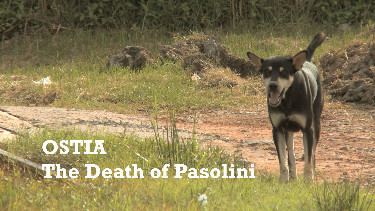 | 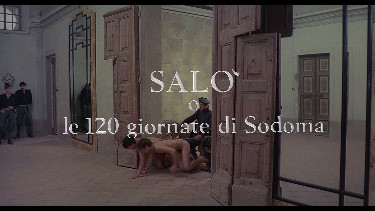 |
 |  |
DVD Menus
Criterion (REISSUE)
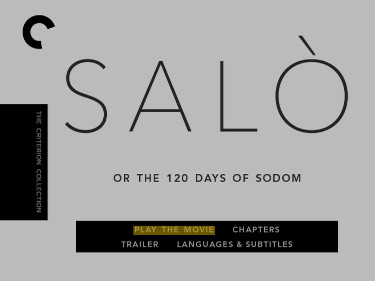 | 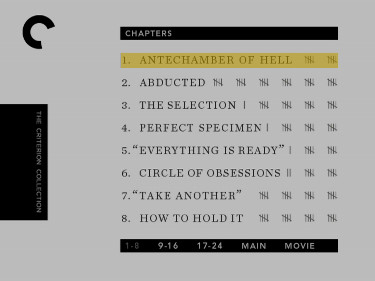 |
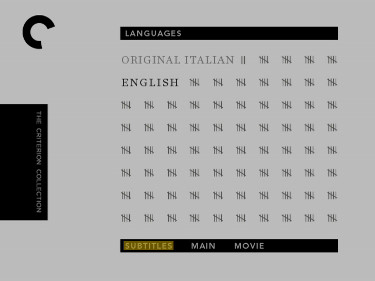 | 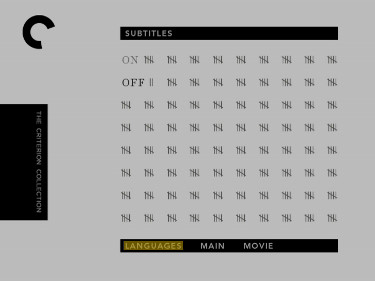 |
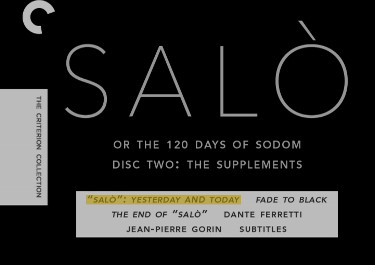 |  |
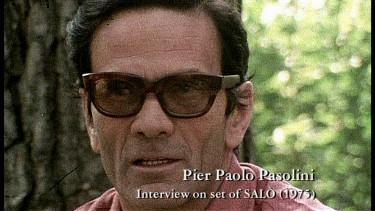 | 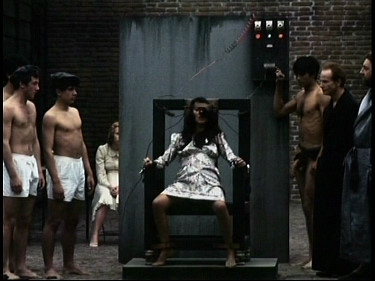 |
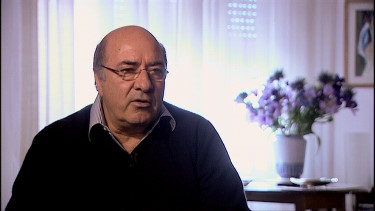 | 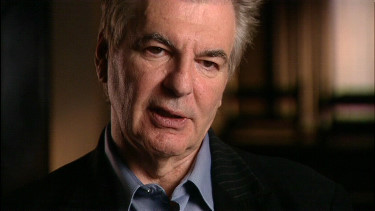 |
(Gaumont Columbia Tristar - Region 2 - PAL - LEFT vs. Criterion - Region 1 - NTSC - MIDDLE vs. BFI - Region 2 - PAL - RIGHT)
|
|
|
Criterion - Region 'A' - Blu-ray
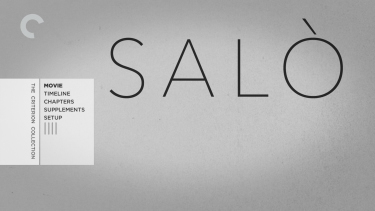 |
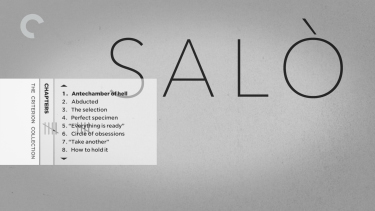 |
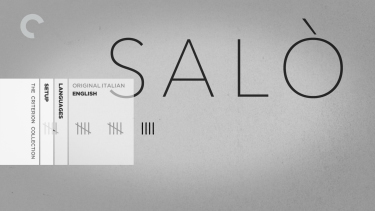 |
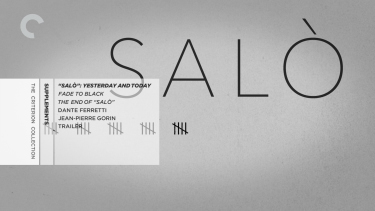 |
Edge enhancement HALO on the BFI
Blu-ray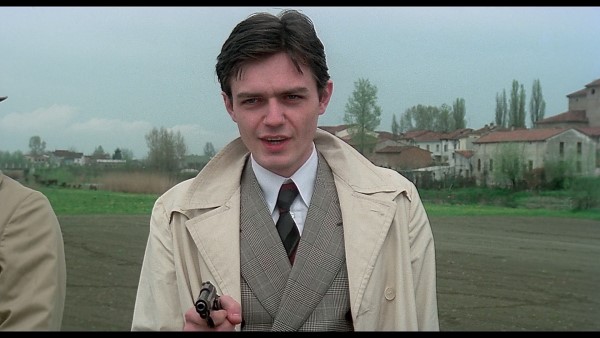 |
 |
Title
1) Gaumont Columbia Tristar - Region 2 - PAL TOP 2) Criterion (original) - Region 1 - NTSC - SECOND 3) BFI - Region 2 - PAL - T HIRD4) Criterion (REISSUE) - Region 1 - NTSC - FOURTH 5) BFI (Blu-ray) - Region 'B' title - English opening credits 1 (3:15) - FIFTH6) BFI (Blu-ray) - Region 'B' title - Italian opening credits 2 (3:15) - BOTTOM |
 |
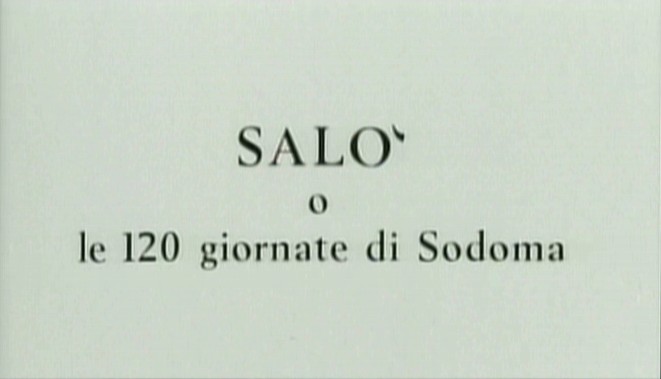 |
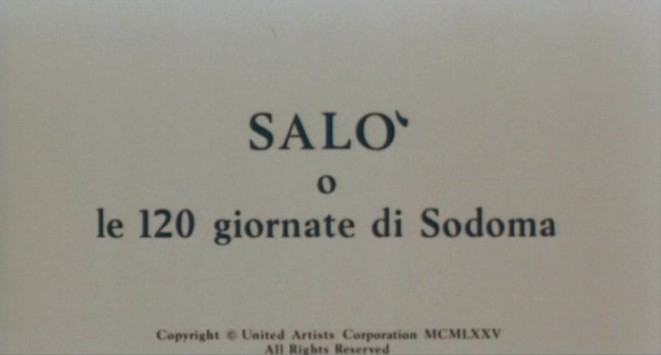 |
 |
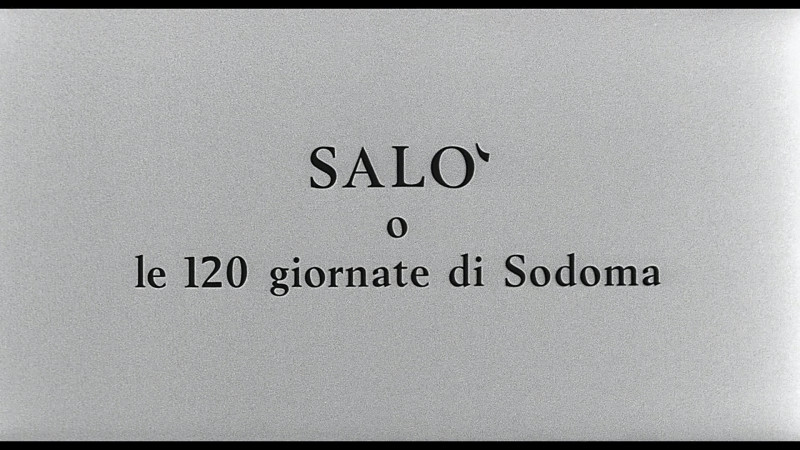 |
Criterion REISSUE DVD appears to have utilized 'alchemist' transfer method with combing between chapter stops!
|
Screen Captures
CLICK EACH BLU-RAY CAPTURE TO SEE ALL IMAGES IN FULL 1920X1080 RESOLUTION
1) Gaumont Columbia Tristar - Region 2 - PAL TOP 2) Criterion (original) - Region 1 - NTSC - SECOND 3) BFI - Region 2 - PAL - T HIRD4) Criterion (REISSUE) - Region 1 - NTSC - FOURTH5) BFI - Region 'B' - Blu-ray - FIFTH6) Criterion - Region 'A' - Blu-ray - BOTTOM
|
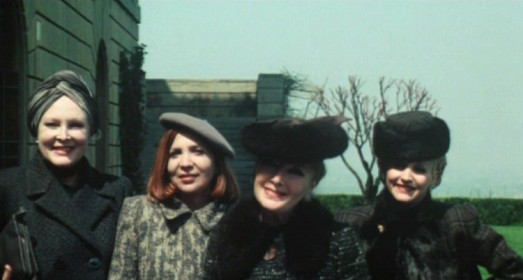 |
|
|
|
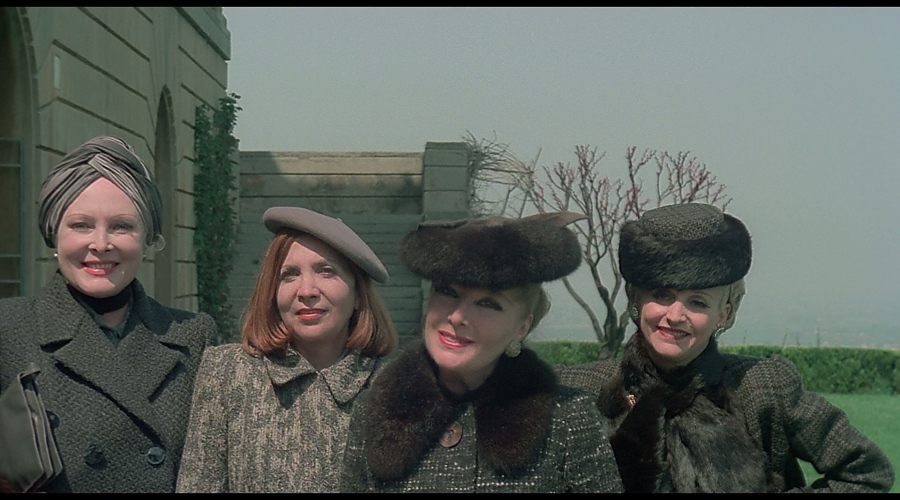 |
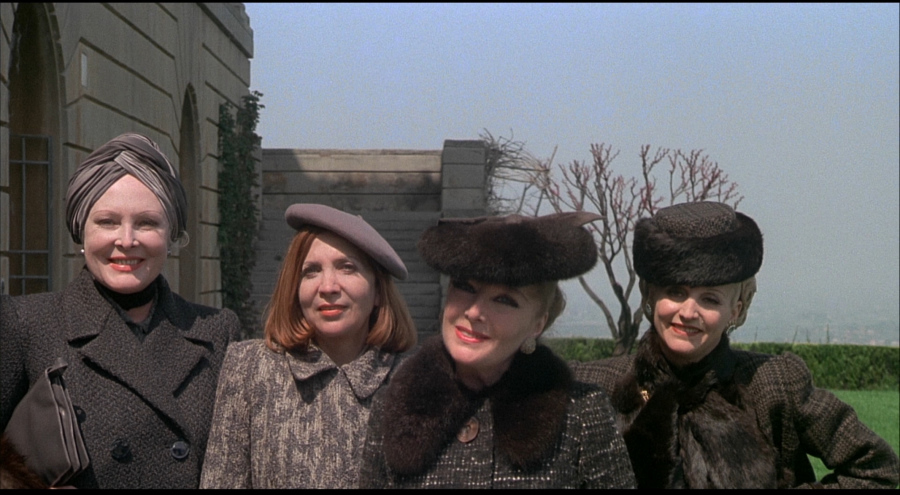 |
1) Gaumont Columbia Tristar - Region 2 - PAL TOP 2) Criterion (original) - Region 1 - NTSC - SECOND 3) BFI - Region 2 - PAL - T HIRD4) Criterion (REISSUE) - Region 1 - NTSC - FOURTH5) BFI - Region 'B' - Blu-ray - FIFTH6) Criterion - Region 'A' - Blu-ray - BOTTOM
|
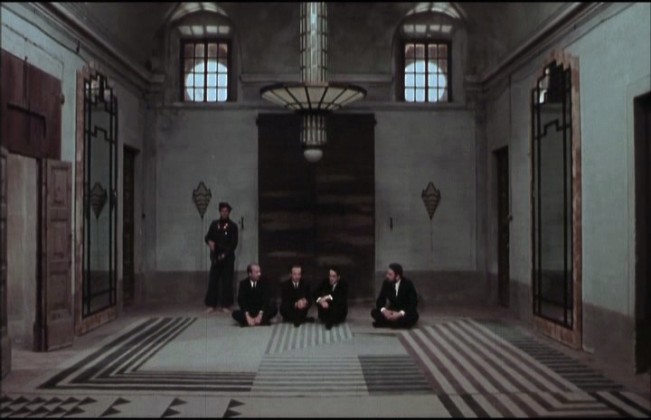 |
|
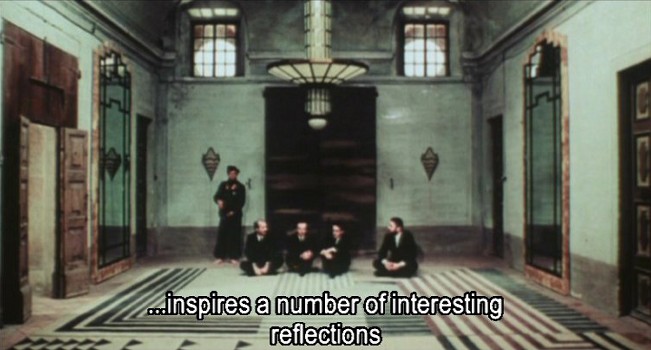 |
|
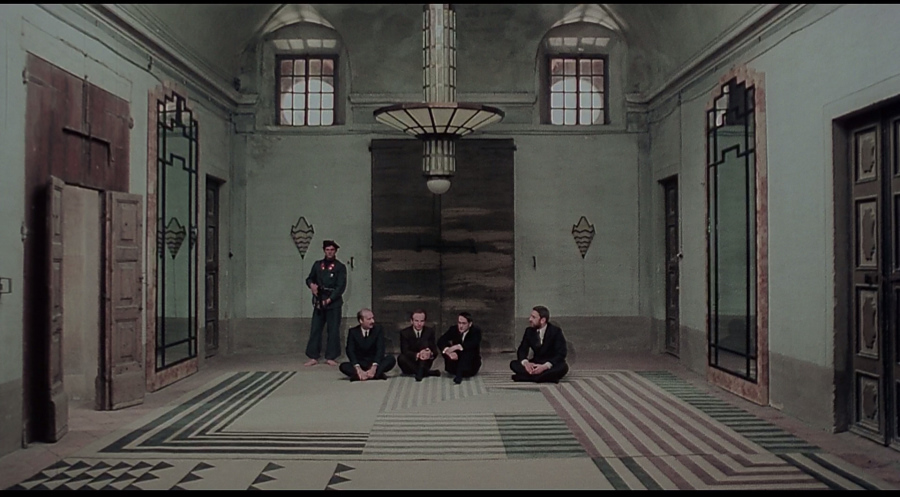 |
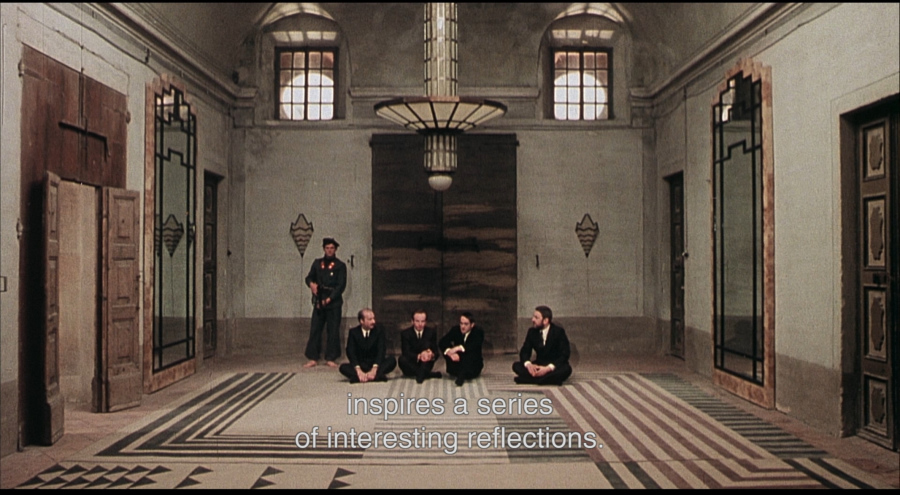 |
1) Gaumont Columbia Tristar - Region 2 - PAL TOP 2) Criterion (original) - Region 1 - NTSC - SECOND 3) BFI - Region 2 - PAL - T HIRD4) Criterion (REISSUE) - Region 1 - NTSC - FOURTH5) BFI - Region 'B' - Blu-ray - FIFTH6) Criterion - Region 'A' - Blu-ray - BOTTOM
|
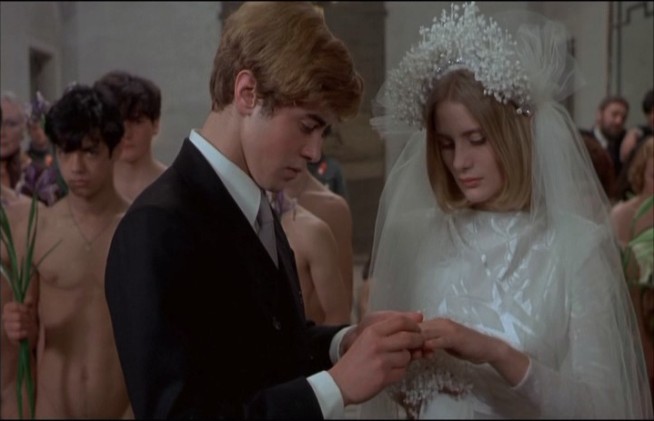 |
|
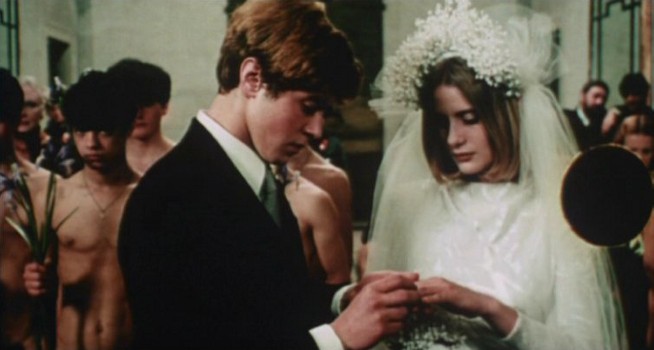 |
|
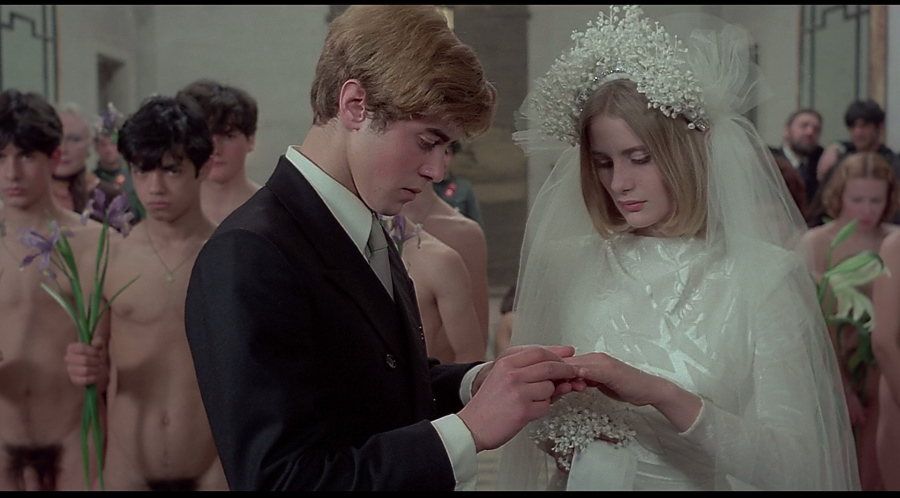 |
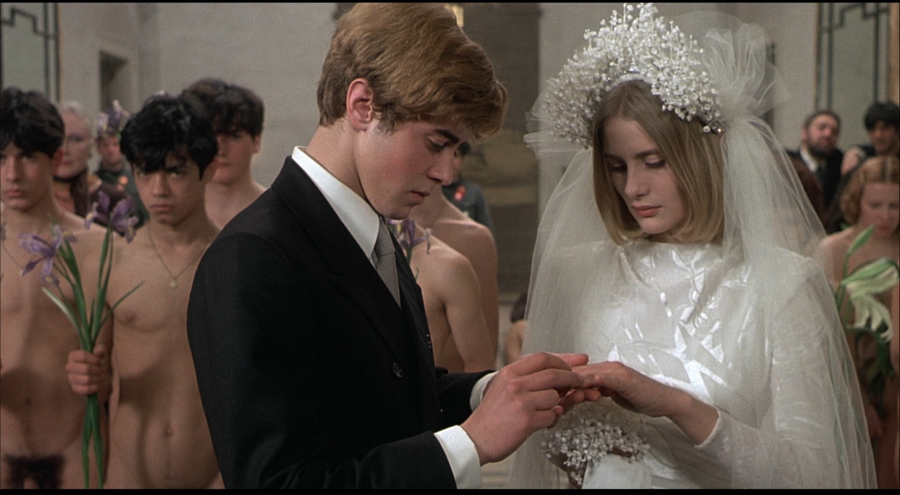 |
1) Gaumont Columbia Tristar - Region 2 - PAL TOP 2) Criterion (original) - Region 1 - NTSC - SECOND 3) BFI - Region 2 - PAL - T HIRD4) Criterion (REISSUE) - Region 1 - NTSC - FOURTH5) BFI - Region 'B' - Blu-ray - FIFTH6) Criterion - Region 'A' - Blu-ray - BOTTOM
|
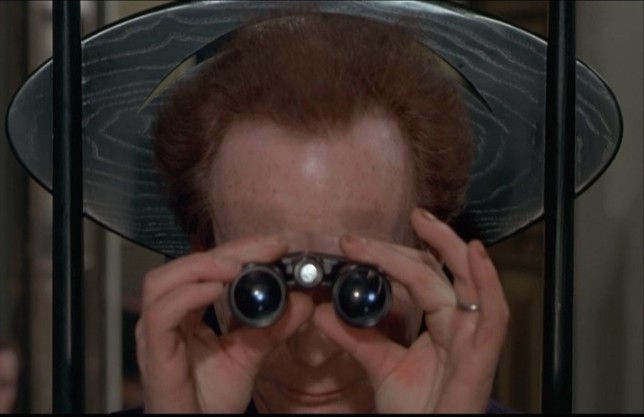 |
|
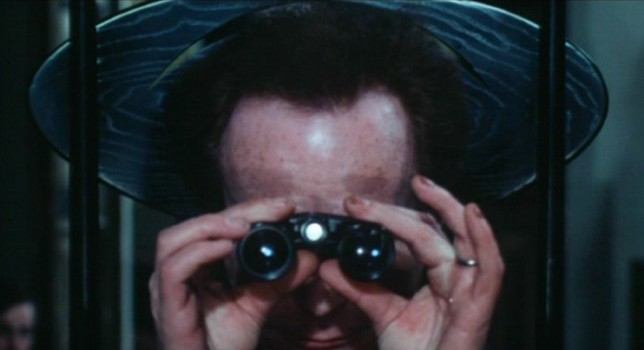 |
|
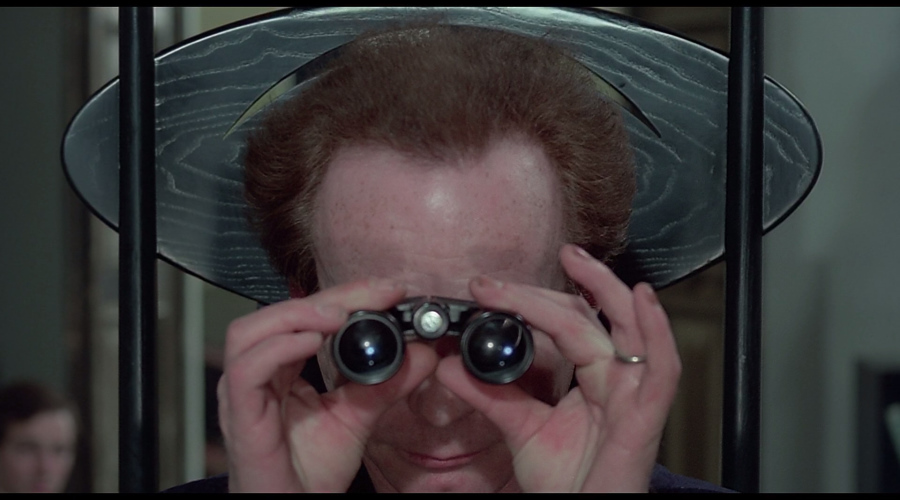 |
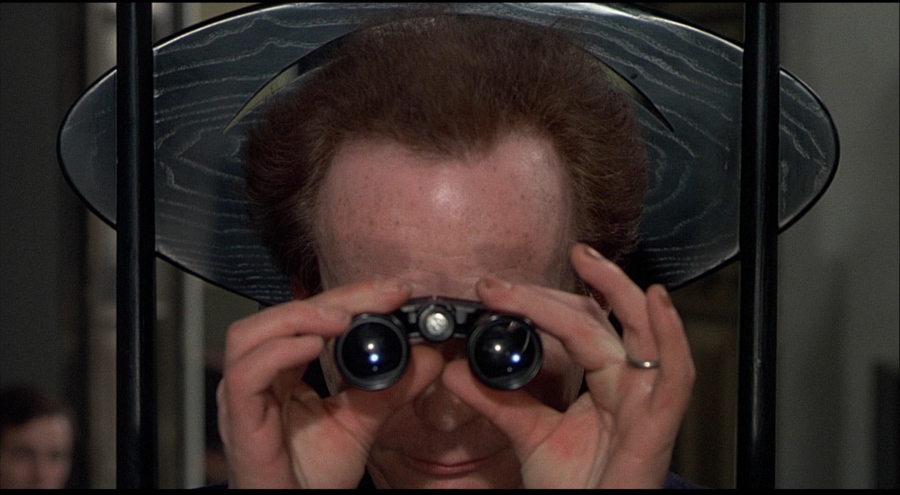 |
|
|
|
BFI - Region 'B' - Blu-ray |
![]()
![]()
![]()
![]()

Search DVDBeaver
|
S E A R C H D V D B e a v e r |

